Archetypes Assemble!
The Avengers. Some of the greatest comic book heroes ever written, and the focus of what is now the greatest cinematic undertaking of our time. They have inspired generations of people with tales of characters who are flawed and all too human stepping up to perform extraordinary feats of heroism, showing that even if we ourselves fall short of the heroic ideal, there is no reason we cannot do the same.
Tales like this of course inspire many spin-off tales in the form of alternate universes, recoots, What-Ifs, fan art, fan fiction, and imitations of endless variety.
This document is the product of my own inspiration to recreate the members of the Avengers in 5e by way of class archetypes. The ultimate goal is to capture the feel of these Marvel characters (my primary goal) while attempting to maintain game balance in D&D (my secondary goal).
Of course, the vast history of Marvel leaves a great deal to work with, some of it contradictory. As such I will be using the way the characters are depicted in the Marvel Cinematic Universe as my main source of inspiration. As such, the artwork I will be using will be of the characters as they appear in the Marvel Cinematic Universe.
Ultimately, I hope to get at least one archetype for each of the twelve base classes in the Player's Handbook as well as the two base classes released through Unearthed Arcana. Of course, this is easier said than done and many classes, particularly the martial ones, will have more archetypes than others.
A Multi-person project
I am not the only one to make archetypes based on the Avengers for 5e. I have, with the creators' permission, replicated their creations here. In cases where I have been unable to obtain permission, I have instead provided a link to that particular archetype.
Be warned, all archetypes I have made are playtest material at best and may not be balanced. I greatly appreciate feedback of all kinds and ask that you present it in this thread) if you have any suggestions on how I might improve these from either a thematic or balance perspective.
 Credit: Marvel Cinematic Universe
Credit: Marvel Cinematic Universe
Table Of Contents
- 1 Archetypes Assemble!
- 2 Artificer Specialists
- 3 Barbarian Primal Paths
- 4 Bard Colleges
- 5 Cleric Domains
- 6 Druid Circles
- 7 Fighter Martial Archetypes
- 8 Monastic Traditions
- 9 Mystic Orders
- 10 Paladin Oaths
- 11 Ranger Enclaves
- 12 Roguish Archetypes
- 13 Sorcerous Origins
- 14 Warlock Patrons
- 15 Wizard Arcane Traditions
- 16 Universal Archetype
- 17 S.H.I.E.L.D.'s Armory
- 18 Sidebars
Artificer Specialists
You might be wondering why the first base class covered is one from the Unearthed Arcana, but it's very simple: It comes first in the alphabet. The Unearthed Arcana's Artificer is a half-caster class for highly Intelligent adventurers that revolves around crafting magical items to boost not just their own prowess, but that of their allies.
Armorer

Credit: Marvel Cinematic Universe
The Armorer is the perfect class for none other than one of the most brilliant inventors of the Marvel Universe, the man who built his superhero career in a cave with a box of scraps: Tony Stark, the Iron Man.
Armorers are crafters of extremely durable suits of armor that protect their wearers from harm, and of course know how to wear them as much as they know how to make them. They are not content with just making their armors bastions of defensive ability, they will readily incorporate offensive ability into the armors they craft as well.
They are also always looking to improve their creations and few Armorers do not have ready more suits of armor than they could ever personally wear.
Tools of the Trade
You gain proficiency in Smith's Tools and Jeweler's Tools, assuming you don’t already have them. You also gain those tools for free—the result of tinkering you’ve done as you’ve prepared for this specialization. In addition, you may set an arcane spellcasting focus into your armor, preventing it from being taken from you by force unless your armor is taken with it.
Crafting
If you craft a magical item in the armor category, it takes you a quarter of the usual time and costs you half as much gold.
Armorer Spells
Starting at 3rd level, you always have certain spells prepared after you reach particular levels in this class, as shown in the Armorer Spells table. These spells count as artificer spells for you, but they don't count against the number of artificer spells you prepare.
Armorer Spells
| Artificer Level | Armorer Spells |
|---|---|
| 3rd | Shield, Absorb Elements |
| 5th | Levitate, Darkvision |
| 9th | Fly, Protection From Energy |
| 13th | Fabricate, Locate Creature |
| 17th | Wall of Force, Destructive Wave |
Arcanomagical Armor
At 3rd level you gain proficiency with Heavy Armor and you are able to empower your armor to fire bolts of pure magical energy. While wearing medium or heavy armor, you know the Eldritch Blast cantrip, it counts as an artificer cantrip for you and does not count against your number of cantrips known.
Man of Iron
At 6th level, you learn how to channel magical energy into your armor to better protect yourself. While wearing medium or heavy armor, you have resistance to nonmagical bludgeoning, slashing, and piercing damage. In addition, you can use your reaction to summon your armor from anywhere within 1000 feet of you. When you do so, the armor gains a flying speed equal to your walking speed and may take the Dash action as a bonus action. It must still travel to your position and circumbent obstacles as normal, but automatically dons itself to you when it arrives at your position without using your action or bonus action.
Armored Legion
Starting at 14th level, you can command your armor to act even when you are not in it. While one of your suits of medium or heavy armor is within 1000 feet of you, you may use a bonus action to telepathically command it to take one action. The armor has AC equal to if you were wearing it, half your total hp, and physical stats identical to your own. It does not possess the Extra Attack feature and the only spell it can cast on its own is Eldritch Blast, which it does so as a caster of half your Artificer level. You may also cast any Artificer spell you know through a suit of armor you command with this feature as if the armor itself had cast the spell.
Making War Machine
Credit: Marvel Cinematic Universe
It's hard to talk about Iron Man without talking about his buddy in the military: James Rhodes, the War Machine. Of course, making War Machine is a slightly different process than making an archetype for him. So here's how to get War Machine into your campiagn:
1) Have one of the characters be an Armorer Artificer.
2)Have your character be a Fighter of any standard archetype (I suggest Champion) and the Soldier background.
3) Have your Armorer Artificer outfit the Fighter with a replica of their own armor.
4) Make sure the Fighter in question has proficiency in firearms if your campaign uses them and outfit their version of the armor with as many firearms as you can get away with.
Barbarian Primal Paths
Ah, the Barbarian. The bastion of animalistic fury and barely-contained rage. Warriors who wade into the thickest part of battle with little more than a bare chest, a bellow of animalistic fury, and likely the biggest nastiest weapon they can get their hands on.
Path of Boundless Rage

Credit: Marvel Cinematic Universe
Is absolutely anyone surprised that I made Bruce Banner, the Incredible Hulk, a Barbarian? Show of hands? Didn't think so.
A Barbarian of this Path doesn't just use their Rage, they give themselves over to it completely. Perhaps not entirely of their choosing, but they do so. Their Rage does more than a normal Barbarian's, transforming them from perhaps an unassuming individual into a mountain of angry muscle.
Rage Monster
When you choose this path at 3rd level, entering Rage triggers transformative effects in you. While raging, you gain the following additional traits:
- Your size category increases by 1, from small to medium or medium to large. Clothing and equipment you wear does not change size with you unless enchanted to do so.
- Your carrying capacity (including maximum load and maximum lift) is doubled.
- The size of your unarmed strike's damage die increases by 1, to a minimum of 1d4.
- Your Unarmored Defense feature uses your Strength modifier instead of your Dexterity modifier when calculating AC. You can use a shield and still gain this benefit, however if you do so you only gain half the shield's bonus to your AC, rounded up.
- When called upon to make a Dexterity saving throw, you may instead make a Constitution saving throw.
- You have disadvantage on ability checks involving Intelligence, Wisdom, and Charisma (other than Intimidation).
When your Rage ends, you immediately gain a level of exhaustion. If this would leave you with two or more levels of exhaustion, you immediately lose consciousness and sleep for eight hours per level of exhaustion.
Endless Rage
Starting at 6th level when the duration of your rage expires and you have uses of rage remaining, you may immediately expend another use of your rage to extend the duration of your rage by another minute and gain temporary hp equal to twice your Constitution modifier.
If you have used this feature to extend your Rage, you must make a DC 15 Constitution saving throw when your Rage ends for every time you used this feature to extend your Rage. On a failure, you gain an additional level of Exhaustion (this may not leave you with more than five total levels of Exhaustion).
Thunderous Clap
Starting at 6th level, you are able to use an action to cast the Thunderclap cantrip using Strength as your spellcasting modifier while raging (and only while raging). This counts as an attack for purposes of continuing your rage and you may add your bonus rage damage to the spell's damage. You may not use this feature if you used it the previous round.
In addition, you may attempt to use Thunderclap to perform a variety of minor effects up to a range of 5 x your Proficiency modifier feet. Possible effects include:
- Putting out nonmagical fires.
- Shattering fragile objects.
- Shoving tiny creatures.
- Scattering small objects.
Implacable Monster
Beginning at 10th level, when you are raging and are subjected to an effect that allows you to make a Constitution saving throw to take only half damage, you instead take no damage if you succeed on the saving throw, and only half damage if you fail.
In addition, you may enter a rage as a reaction when asked to make a saving throw of any kind or when you take damage from any source.
Immortal Rage
Starting at 14th level, you may use your Endless Rage feature as a reaction to being reduced to 0 hp, immediately regaining consciousness for as long as you have temporary hp. In addition, the amount of temporary hp you gain when using your Endless Rage feature increases to three times your Constitution modifier. You may use this feature a number of times equal to your Constitution modifier and regain all expended uses after you complete a long rest.
Furthermore, when you use your Endless Rage feature to extend the duration of your rage for any reason, you may also increase the size of your unarmed strike's damage die by 1, to a maximum of 1d12, until your rage ends.
You may not use this feature in response to being knocked unconscious if the remaining damage from the attack that reduced you to 0 hp would exceed the temporary hp you would gain from using this feature.
Path of Judgement
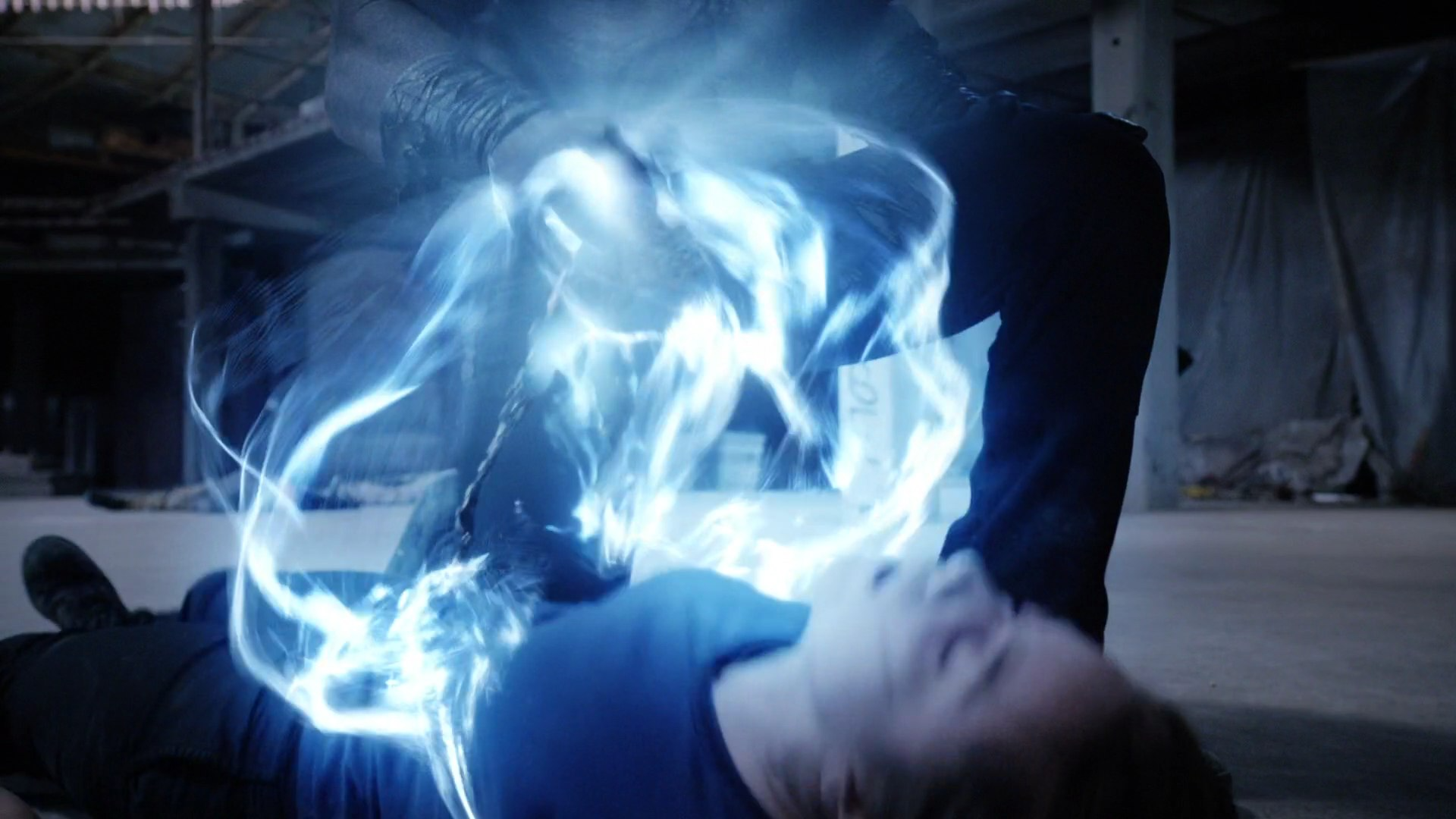
Credit: Marvel Cinematic Universe
Okay, I'll admit that I hadn't planned to make an archetype for Andrew Garner, aka Lash from Agents of S.H.I.E.L.D., but rewatching season 3 left me inspired.
Barbarians who choose this path are driven to punish evil, though they are not always the best at determining who is deserving of punishment.
Spellcasting
When you choose this path at 3rd level, you gainthe ability to cast certain spells.
Spell Slots. The Judgement Spellcasting table below shows how many spell slots you have to cast your spells of 1st level and higher. To cast one of these spells, you must expend a slot of the spell’s level or higher. You regain all expended spell slots when you finish a long rest.
For example, if you know the 1st-level spell shield and have a 1st-level and a 2nd-level spell slot available, you can cast shield using either slot.
Spells Known of 1st-Level and Higher. You know Detect Poison and Disease as well as two other 1st-level paladin spells of your choice.
Except for Detect Poison and Disease, all paladin spells you learn through this feature must come from either the Evocation or Abjuration schools and may not have a casting time of longer than 1 action.
The Spells Known column of the Agent Spellcasting table shows when you learn more paladin spells of 1st level or higher.
Whenever you gain a level in this class, you can replace one of the paladin spells you know (other than Detect Poison and Disease) with another spell of your choice from the paladin spell list.
Spellcasting Ability. Strength is your spellcasting ability for your artificer spells, since you learn your spells through study and memorization. You use your Strength whenever a spell refers to your spellcasting ability. In addition, you use your Strength modifier when setting the saving throw DC for a paladin spell you cast and when making an attack roll with one.
Spell save DC = 8 + your proficiency bonus + your Strength modifier Spell attack modifier = your proficiency bonus + your Strength modifier
Rage Casting. You may cast a spell while raging provided it does not have any somatic or material components. You may not concentrate on a spell cast this way unless its name contains 'Smite'.
Judgement Spellcasting Table
| Barbarian Level | Spells Known | Spell 1st | Slots 2nd | Per 3rd | Level 4th |
|---|---|---|---|---|---|
| 3rd | 3 | 2 | - | - | - |
| 4th | 4 | 3 | - | - | - |
| 5th | 4 | 3 | - | - | - |
| 6th | 4 | 3 | - | - | - |
| 7th | 5 | 4 | 2 | - | - |
| 8th | 6 | 4 | 2 | - | - |
| 9th | 6 | 4 | 2 | - | - |
| 10th | 7 | 4 | 3 | - | - |
| 11th | 8 | 4 | 3 | - | - |
| 12th | 8 | 4 | 3 | - | - |
| 13th | 9 | 4 | 3 | 2 | - |
| 14th | 10 | 4 | 3 | 2 | - |
| 15th | 10 | 4 | 3 | 2 | - |
| 16th | 11 | 4 | 3 | 3 | - |
| 17th | 11 | 4 | 3 | 3 | - |
| 18th | 11 | 4 | 3 | 3 | - |
| 19th | 12 | 4 | 3 | 3 | 1 |
| 20th | 13 | 4 | 3 | 3 | 1 |
Raging Incineration Smite
Starting at 3rd level, when you hit a creature with a melee weapon attack while raging, you can expend one spell slot to deal fire damage to the target in addition to the weapon’s damage. The extra damage is 2d8 for a 1st-level spell slot, plus 1d8 for each spell level higher than 1st, to a maximum of 5d8.
If this damage reduces a creature to zero hit points, it automatically kills them.
Burn the Infection
Starting at 6th level, you gain the ability to burn away poisons and diseases. You are immune to disease, poison damage, and the poisoned condition.
In addition, you may spend a spell slot to remove one poison or disease from another individual. If you do so, they are completely immune to that specific poison or disease for a number of months equal to 2/3 your Barbarian level, rounded down, up to one year.
Starting at 14th level, you may use this ability on magical poisons and diseases.
Aura of Judgement
Starting at 10th level, you cannot be charmed or frightened while raging and friendly creatures within 10 feet of you while you rage have advantage on saving throws against being charmed or frightened.
In addition, when you rage you may make a Charisma (Intimidation) check as a bonus action and enemy creatures within 10 feet of you have disadvantage on contested rolls versus your Charisma (Intimidation) checks while you are raging.
The range of these effects increases to 30 feet at 14th level.
Path of Tranquil Fury

Credit: Marvel Cinematic Universe
The first archetype for a character from the Marvel Cinematic Universe that was not in a movie is none other than Luke Cage. Making the indestructible man from Harlem was an interesting challenge as his style is very Barbarian-like, but he himself is not really prone to anything resembling Barbarian Rage, despite holding plenty of anger. So I decided to do an experiment and make a Rage-less Barbarian.
Those who follow the Path of Tranquil Fury have learned to harness their Rage rather than unleash it. They control the primal power within rather than surrendering to it, and it grants them abilities somewhat different than many other Barbarians.
Rageless Barbarian
Because the 11th and 15th level features of the Barbarian enhance their Rage ability, and this archetype specifically does away with Barbarian Rage, I have given this archetype some additional features at 11th and 15th level to make up for it.
Calm Rage
When you take this path at 3rd level, you have learned to bind your rage to your will rather than allowing yourself to surrender to it. You are no longer able to make use of your Rage feature. Instead, you gain the following permanent benefits:
- The size of your unarmed strike's damage die increases by 1, to a minimum of 1d4.
- Your Unarmored Defense feature uses your Strength modifier instead of your Dexterity modifier when calculating AC. You can use a shield and still gain this benefit, however if you do so you only gain half the shield's bonus to your AC, rounded up.
- When called upon to make a Dexterity saving throw, you may instead make a Constitution saving throw.
- Starting at 6th level, you have advantage on all Strength checks and Strength saving throws. In addition, your carrying capacity (including maximum load and maximum lift) is doubled.
- Starting at 6th level, when you make a melee weapon attack using Strength, you gain a +1 bonus to the damage roll. This bonus increases to +2 at 11th level and to +3 at 15th level.
Tough Skin
Starting at 6th level, when an attacker hits you with an attack, regardless of whether or not you can see them, you can use your reaction to halve the attack's damage against you.
At 11th level, you have resistance to nonmagical bludgeoning, piercing, and slashing damage. At 15th level, you have resistance to all bludgeoning, piercing, and slashing damage.
Implacable Man
Beginning at 10th level, when you are subjected to an effect that allows you to make a Constitution saving throw to take only half damage, you instead take no damage if you succeed on the saving throw, and only half damage if you fail.
Zen Fury
By 14th level, you have mastered your emotions and gain proficiency in Wisdom saving throws.
Bard Colleges
Bards, the inspiring musical support characters who are often characterized by staying out of the fray so they can sing about the epic deeds of their party members in the tavern later on. Ask not what your Bard can do for the campaign, but what they can do for their fellow adventurers.
College of Medicine

Credit: Marvel Cinematic Universe
Claire Temple, known in the comics as the Night Nurse. She's not one to go out and beat up bad guys in a mask, but she's always (reluctantly) down with patching the heroes back up when they stumble in bleeding everywhere.
The College of Medicine focuses on the healing arts, boasting a comprehensive breadth of healing prowess that can be said to be superior to that of the average Cleric.
Bonus Proficiencies
When you join this college at 3rd level, you gain proficiency in Medicine and the Herbalism Kit.
Flexible Spellcasting
When you cast a Bard spell, you may use Wisdom as your spellcasting modifier instead of Charisma.
Healer's Touch
Starting at 3rd level, when you expend a use of a Healer's Kit to stabilize a creature, that creature also gains hit points equal to its Constitution modifier (minimum of 1) + your Wisdom modifier (minimum of 1).
Alternatively, you may take a 1d6 minutes to make a DC 13 Wisdom (Medicine) check to heal a creature by a number of hit points equal to its Constitution modifier (minimum of 1) + your Wisdom modifier (minimum of 1). You may not use this feature on the same creature more than once in an hour.
In addition, you may spend part of a short rest tending to the wounds of a number of creatures equal to your Wisdom modifier. If the chosen creatures spend hit dice to recover hit points, each expended hit die recovers hit points equal to the maximum value of that hit die + their Constitution modifier.
At 6th level, when you complete a long rest, you may choose a number of creatures equal to your Wisdom modifier to gain temporary hit points equal to their Constitution modifier (minimum of 1) + your Wisdom modifier (minimum of 1)
CPR
At 6th level, you learn the Revivify spell. This counts as a Bard spell for you and does not count against your number of spells known. In addition, when you cast Revivify you do not need to expend any material components.
Furthermore, when you cast Revivify on a creature, you may choose to make a DC 15 Charisma saving throw. On a success, you do not expend a spell slot.
At 14th level, you can attempt to cast Revivify even if you have no spell slots and make a DC 15 Charisma saving throw when you do. If you do this and fail the saving throw, you gain a level of Exhaustion.
Night Nurse
At 14th level, you have a great deal of experience with troublesome patients. You have advantage on all ability checks made to grapple or otherwise subdue another creature.
In addition, when you make a Medicine or Herbalism Kit check to heal another creature, you can expend one use of Bardic Inspiration. Roll a Bardic Inspiration die and add the number rolled to your ability check. You can choose to do so after you roll the die for the ability check, but before the GM tells you whether you succeed or fail. If the check is successful, you may add the Bardic Inspiration die's result to the amount of hit points the creature recovers.
Cleric Domains
Making Cleric Domains was a tricky prospect. After all, not many characters in Marvel are particularly religious and call upon their gods to grant them power. However, by tilting my head and squinting enough, I did manage to come up with the following.
Devil's Domain

Credit: Marvel Cinematic Universe
I will freely admit that making devout Catholic Matthew Murdock, aka Daredevil, into a Cleric was something of a stretch. However, I had been reading some fanfiction where Matt encounters vampires and discovers that his deep faith allows him to ward them off with crosses or his rosary, essentially allowing him to use Turn Undead. It made sense and was perfect for my purposes.
There are two sides to the world. On one side are the innocent who desire justice. On the other are the violent who care not who they hurt to get what they want. Between these two lies the Devil's Domain.
Daredevil and Spells
Daredevil is not a character that seems like a spellcaster. However, there are a number of spells on the Cleric spell list that are not particularly overtly magical or supernatural in how they manifest and would actually be thematic to how Daredevil operates.
These spells include, but are not limited to: Guidance, Resistance, Bane, Bless, Sanctuary, Detect Magic, Detect Evil and Good, and Detect Poison and Disease.
Domain Spells
Starting at 1st level, you always have certain spells prepared after you reach particular levels in this class, as shown in the Domain Spells table. These spells count as cleric spells for you, but they don't count against the number of cleric spells you prepare.
Domain Spells
| Cleric Level | Domain Spells |
|---|---|
| 1st | Heroism, Wrathful Smite |
| 3rd | Enhance Ability, Aid |
| 5th | Fear, Aura of Vitality |
| 7th | Staggering Smite, Death Ward |
| 9th | Hallow, Skill Empowerment |
Bonus Proficiency
You have proficiency in Perception.
Blindsense
For whatever reason, you are blind. Starting at 1st level, you are completely incapable of seeing and automatically fail any ability check requiring sight. However, you have honed your other senses to the point that they all but make up for your lost sight in most cases.
As long as you can hear, you are aware of the location of all creatures and objects within 30 feet of you, even if they are invisible. This distance increases to 60 feet at 5th level, 90 feet at 11th level, and 120 feet at 17th level.
In addition, you have advantage on Wisdom checks involving any of your senses other than sight up to a range of feet equal to 100 x your proficiency modifier.
Channel Divinity: The Devil Inside
Starting at 2nd level, you can use your Channel Divinity to summon up from within yourself the innate affinity for violence that all creatures possess.
For 1 minute, you gain the following benefits:
- You have advantage on Constitution saving throws.
- When you make a melee weapon attack using Strength, you gain a +1 bonus to the damage roll. This bonus increases to +2 at 8th level, and +3 at 15th level.
- You have resistance to bludgeoning, piercing, and slashing damage.
- Your tolerance to pain grows, allowing you to automatically succeed on all concentration checks.
Extra Attack
Beginning at 6th level, you can attack twice, instead of once, whenever you take the Attack action on your turn.
Devil's Smite
Starting at 8th level when you hit a creature with a melee weapon attack, you can expend one spell slot to deal additional damage to the target of the weapon's base damage type (Bludgeoning, Slashing, or Piercing). The extra damage is 2d8 for a 1st-level spell slot, plus 1d8 for each spell-level higher than 1st, to a maximum of 5d8.
Daredevil
Starting at 17th level, you have proficiency in Dexterity saving throws.
Druid Circles
Following on one difficult base class to brew a Marvel archetype for is another: The nature-loving primary spellcasting Druid. Defenders of the natural balance who -- to parody the concept -- will see you reduce, reuse, and recycle... or else.
Circle of the Five Tribes

Credit: Marvel Cinematic Universe
I wracked my brain trying to think of what character might fit the Druid mold before realizing that there isn't a single character that does.
There's a whole nation of them.
Wakanda wasn't even that much of a stretch for me to make this archetype from. Their melding of ancient and modern traditions, worshipping of animal totem gods, and just general clean living made them the perfect Druid fodder. Heck, with Vibranium they're also high tech Druids, so you can drop them into a modern campaign and they'll feel right at home. The biggest issue was coming up with five animal totems to use, so I had to delve a bit into comics lore.
You hail from, or perhaps were inducted into, a mysterious nation of Druids known to outsiders only as the Five Tribes. The tribes keep to themselves, but it is known that they worship five totemic deities from which they derive their power: The Panther, the Gorilla, the Ibis, the Crocodile, and the Wolf.
It is also rumored they have access to the most powerful metal in the known world.

Credit: Marvel Cinematic Universe
Vibranium instead of Wildshape
Because Wakandans weren't exactly known for their shapeshifting prowess, I decided to do away with Wildshape for this archetype and instead give them abilities revolving around Marvel's super metal Vibranium.
Because of the many supernatural properties of Vibranium, and how it has allowed Wakanda in the Marvel Universe to outstrip the rest of the world technologically, it is encouraged that players and DMs alike explain the effects of Druid spells as the product of Vibranium-based technology whenever and wherever possible.
Circle Spells
You learn the Message and True Strike cantrips. These count as Druid cantrips for you and do not count against your number of cantrips known.
In addition, at 2nd, 3rd, 5th, 7th, and 9th level you gain access to the circle spells of the five tribes. Once you gain access to a circle spell, you always have it prepared, and it doesn't count against the number of spells you can prepare each day. If you gain access to a spell that doesn't appear on the druid spell list, the spell is nonetheless a druid spell for you.
Circle Spells
| Druid Level | Circle Spells |
|---|---|
| 2nd | Shield, Absorb Elements |
| 3rd | See Invisibility, Darkvision |
| 5th | Nondetection, Sending |
| 7th | Staggering Smite, Fabricate |
| 9th | Destructive Wave, Commune with Nature |
Vibranium
You do not gain the Druid's Wildshape features. Instead when you join this circle at 2nd level, you gain ready access to a mythical mineral known as Vibranium that you can infuse your clothing, armor, and weapons with. You also gain proficiency in all simple and martial weapons and may use metal armor and shields without penalty. You gain one or more of the following benefits when you use such items:
- Light armor you wear can appear as fine clothing.
- While you are wearing Medium or heavier armor, you do not suffer disadvantage on Stealth checks.
- Starting at 4th level, the maximum Dexterity bonus you may apply to your AC when wearing Medium Armor increases to 3.
- Starting at 4th level, when you make a melee or ranged weapon attack, it ignores resistance.
- Starting at 8th level, while you are wearing Armor, you have resistance to Thunder damage as well as nonmagical Bludgeoning, Slashing, and Piercing damage.
Tribal Spirit
At 2nd level, when you join this circle, you choose a tribal spirit and gain its feature. You must make or acquire a physical totem object- an amulet or similar adornment—that incorporates fur or feathers, claws, teeth, or bones of the totem animal. At your option, you also gain minor behavioral quirks that are reminiscent of your totem spirit. For example, if your tribal spirit is the panther you might growl or snarl at foes or if your spirit is the gorilla, you might commonly engage in dominance displays based on strength.
Panther: You can surge with action, catching your opponents off guard. On your turn, you can take one additional action on top of your regular action and a possible bonus action. Once you use this feature, you must finish a short or long rest before you can use it again.
Gorilla: You possess a primal fury. You gain one use of Barbarian Rage that you may use as a bonus action. While raging and not wearing heavy armor, you are unable to cast or concentrate on spells, you have advantage on all Strength checks and Strength saving throws, your melee attacks deal an extra +2 damage, and you have resistance to bludgeoning, piercing, and slashing damage. Your rage lasts for 1 minute. It ends early if you are knocked unconscious or if your turn ends and you haven't attacked a hostile creature since your last turn or taken damage since then. You can also end your rage on your turn as a bonus action. You gain an additional use of this feature at 4th, 8th, and 16th level. You regain all expended uses after you complete a long rest.
Ibis: You have an eidectic memory. You have advantage on all ability checks made to recall information you have previously heard or seen no matter how long it has been. In addition, you may use Intelligence as your spellcasting modifier instead of Wisdom.
Crocodile: You learn the value of a good ambush. Once per turn, you can deal extra 1d6 damage to one creature you hit with an attack if you have advantage on the attack roll. You don't need advantage on the attack roll if another enemy of the target is within 5 feet of it, that enemy isn't incapacitated, and you don't have disadvantage on the attack roll. The amount of the extra damage increases to 2d6 at 9th level and to 3d6 at 15th level.
Wolf: Choose a type of favored enemy: beasts, fey, humanoids, monstrosities, or undead. You gain a +2 bonus to damage rolls with weapon attacks against creatures of the chosen type. Additionally, you have advantage on Wisdom (Survival) checks to track your favored enemies, as well as on Intelligence checks to recall information about them.

Credit: Marvel Cinematic Universe
Extra Attack
Beginning at 6th level, you can attack twice, instead of once, whenever you take the Attack action on your turn.
Tribal Aspect
At 10th level, you gain a magical benefit based on a tribal animal of your choice. You can choose the same animal you selected previously or a different one.
Panther: The cat spirit hones your survival instincts. You gain proficiency in two of the following skills: Athletics, Acrobatics, Stealth, Survival.
Gorilla: You gain the might of a Gorilla. Your carrying capacity (including maximum load and maximum lift) is doubled, and you have advantage on Strength checks made to push, pull, lift, or break objects.
Ibis: The spirit of the Ibis grants you great knowledge and wisdom. You gain proficiency in two of the following skills: Arcana, Religion, Nature, Medicine, Insight.
Crocodile: The spirit of the Crocodile makes you at home in the water. You may hold your breath for a number of minutes equal to twice your Constitution modifier (minimum of 2) and have a swim speed equal to your walking speed. In addition, you gain proficiency in Vehicles (Water).
Wolf: You gain the hunting sensibilities of a wolf. You can track other creatures while traveling at a fast pace, and you can move stealthily while traveling at a normal pace.
Tribal Attunement
At 14th level, you gain a magical benefit based on a tribal animal of your choice. You can choose the same animal you selected previously or a different one.
Panther: When you take the Attack action on your turn, you can attack three times instead of twice.
Gorilla: You can roll one additional damage die when determining the extra damage for a critical hit with a melee or spell attack.
Ibis: You may select two Skills that you have proficiency in. Your proficiency bonus is doubled for any ability check you make that uses either of the chosen proficiencies.
Crocodile: You gain proficiency in Dexterity saving throws.
Wolf: Moving through non-magical difficult terrain costs you no extra movement. You can also pass through non-magical plants without being slowed by them and without taking damage from them if they have thorns, spines, or a similar hazard. In addition, you have advantage on saving throws against plants that are magically created or manipulated to impede movement.
Fighter Martial Archetypes
Straight from classes where I had a dearth of inspiration and into one where I had a plethora of it. The Fighter fits so many characters in the Marvel Universe that I have had to actively restrain myself from using it in several cases. In fact, a few archetypes that I rebranded for casters were originally looking like Fighters.
Super Soldier

Credit: Marvel Cinematic Universe
Steve Rogers, aka Captain America, was the perfect candidate for a Fighter archetype. After all, he was a soldier who waded through the most insane of battlefields with grit, determination, and a shield. Since he was 'the man with the plan', I decided to base this significantly on the Battle Master archetype.
Super Soldiers are a cut above the rest, paragons of what it means to be a warrior, a leader, and a protector.
Mastering the Shield
To make the best Captain America build, you will of course want to take the Soldier Background, but you will also want to pick up the Shield Master Feat at the earliest opportunity.
Bonus Proficiency
If your campaign uses firearms, you have proficiency in all firearms.
Battle Tactician
When you choose this archetype at 3rd level, you learn Inspiring Leader maneuver (detailed below) and one maneuver of your choice from among those available to the Fighter's Battle Master archetype.
You learn two additional maneuvers of your choice at 7th, 10th, and 15th level. Each time you learn new maneuvers, you can also replace one maneuver you know with a different one.
You start with four superiority dice, which are d8s, and you expend one whenever you use a maneuver. You regain them all when you finish a short or long rest.
You gain another superiority die at 7th level and one more at 15th level.
If a maneuver you use requires your target to make a saving throw to resist the maneuver's effects, the saving throw DC equals 8 + your proficiency bonus + your Strength or Intelligence modifier (your choice).
Inspiring Leader (Maneuver)
You can use a bonus action on your turn to choose one creature other than yourself within 60 feet of you who can hear you. That creature gains one Bardic Inspiration die, equal to the size of the Superiority die you spent to use this maneuver.
Once within the next 10 minutes, the creature can roll the die and add the number rolled to one ability check, attack roll, or saving throw it makes. The creature can wait until after it rolls the d20 before deciding to use the Bardic Inspiration die, but must decide before the DM says whether the roll succeeds or fails. Once the Bardic Inspiration die is rolled, it is lost. A creature can have only one Bardic Inspiration die at a time.
Shield Attack
Starting at 3rd level, you know how to use shields as 1d6 bludgeoning weapons with an effective thrown range of 20/60. All relevant proficiency modifiers, ability score modifiers, and enchantment bonuses apply for attacks you make with shields. Throwing your shield requires you to unequip it first, and you may equip and unequip shields using a bonus action or reaction.
At 11th level, the base damage die for attacks you make with shields increases to 1d8 and their effective thrown range increases to 30/90.
Ricocheting Shield
Starting at 7th level, when you throw your shield as a ranged attack, you may choose to use your Intelligence modifier for the attack and damage roll instead of your Dexterity modifier. If you do so and your attack hits, you can choose to expend one of your remaining extra attacks to have the shield ricochet off the target towards a second target within the shield's thrown range and make a new attack roll against this target. You may continue to do this as long as you have extra attacks to expend that round.
If all of these attacks hit and the shield has not traveled father from you than its maximum thrown range, you may choose to have the shield return to your hands.
Improved Combat Superiority
When you reach 10th level, your superiority dice turn into d10. When you reach level 18, your dice turn into d12.
One Man Army
Starting at 15th level, you are a terror on the battlefield no matter how outnumbered you might be. Enemies cannot gain any benefits against you from the presence of their allies.
In addition, you can make Attacks of Opportunity without expending your reaction even if the target took the Disengage action.
Furthermore, whenever you expend one of your superiority dice, you gain temporary hp equal to the size of the superiority die + your Constitution modifier.
Super Soldier Variant

Credit: Marvel Cinematic Universe
Not all super soldiers fling shields around as their primary combat style, like Cap's old buddy James Buchanan "Bucky" Barnes, the Winter Soldier.
If you want to make a Super Soldier that doesn't sling shields around, you are not required to choose the Inspiring Leader maneuver and you replace the Shield Attack and Ricocheting Shield features of the base Super Soldier archetype with the follwing two features:
Winter Soldier Cybernetics
For the full Winter Soldier experience, look into getting a metal arm of some sort.
Student of War
At 3rd level, you gain proficiency with one type of artisan’s tools of your choice.
Improved Critical
At 7th level, your weapon attacks now score a critical hit on a roll of 19 or 20.
Making Deathlok
Credit: Marvel Cinematic Universe
Michael Peterson, aka Deathlok, is another supersoldier, but one with an even greater cybernetic footprint than the Winter Soldier, and his cybernetic arsenal is part and parcel of the character.
Much like the Winter Soldier, Deathlok is best made with the Super Soldier Variant archetype, but his cybernetics require a modern setting.
Use the same Super Soldier Variant archetype and add on some cybernetics appropriate for the campaign in place of more typical armor and weapons.
Making the Patriot
Credit: Marvel Cinematic Universe
Jeffrey Mace, aka the Patriot, and interim director of S.H.I.E.L.D. was not your typical super soldier.
To make the Patriot, use the Super Soldier Variant, but give him the Noble or similar aristocratic/non-combative background.
Making the Punisher
Credit: Marvel Cinematic Universe
I was all set to create a brutal Sniper-like archetype for Frank Castle when I realized that Unearthed Arcana had already done it with the Sharpshooter. So here's how to make the Punisher for D&D:
1) Take the Soldier Background and use the Sharpshooter Archetype from Unearthed Arcana: Fighters.
2) Grant your Fighter, or otherwise obtain, proficiency in Firearms if your campaign has them.
3) Make sure to carry all the ammunition you could ever need. And then some.
Monastic Traditions
Martial arts aren't just a staple of the Marvel Universe, they're a staple of action movies in general. Since I chose to draw inspiration from the Marvel Cinematic Universe, it wasn't exactly hard to find a few candidates for Monk Archetypes.
Way of the Iron Fist

Credit: Marvel Cinematic Universe
Making Danny Rand, the Immortal Iron Fist, into a Monk archetype was effectively a no-brainer. There was even a guideline for what I wanted in the form of Way of the Four Elements. I just had to use Paladin and physical enhancement spells instead of elemental ones.
The Way of the Iron Fist calls upon practitioners to use their chi to smite evil and defend the innocent. You have mastered arts both healing and destructive in your meditations.
Lay on Hands
When you choose this tradition at 3rd level, you learn how to channel your Ki to heal others. You may use an action to spend 1 Ki to heal another living creature for up to five hit points, cure the target of one disease, or neutralize one poison affecting it. Starting at 6th level, you may also end one temporary condition causing the creature to be blinded, deafened, or paralyzed.
This feature has no effect on undead or constructs.
Disciple of the Fist
At 3rd level, you learn magical disciplines that either enhance your body or harness the destructive power of your Ki. Some disciplines require you to spend ki points when you use it.
You learn two martial disciplines of your choice, which are detailed in the "Martial Disciplines" section below. You learn two additional martial disciplines of your choice at 6th, 11th, and 17th level. Each martial discipline has a minimum monk level that you must meet in order to use it.
Whenever you learn a new martial discipline, you can also replace one martial discipline that you already know with a different discipline.
Casting Martial Spells. Some martial disciplines allow you to cast spells. To cast one of these spells, you use its casting time and other rules, but you don’t need to provide material components for it.
Adept of the Fist
Once you reach the 5th level in this class, you can spend additional ki points to increase the level of a martial discipline spell that you cast, provided that the spell has an enhanced effect at a higher level, as Thunderous Smite does. The spell’s level increases by 1 for each additional ki point you spend. For example, if you are a 5th-level monk and use Thundering Fist to cast Thunderous Smite, you can spend 2 ki points to cast it as a 2nd-level spell (the discipline’s base cost of 1 ki point plus 1).
The maximum number of ki points you can spend to cast a spell in this way (including its base ki point cost and any additional ki points you spend to increase its level) is determined by your monk level, as shown in the table below.
Spells and Ki Points
| Monk Levels | Maximum Ki Points for a Spell |
|---|---|
| 5th-8th | 2 |
| 9th-12th | 3 |
| 13th-16th | 4 |
| 17th-20th | 5 |
Martial Discipline List
The Martial Disciplines are grouped by the minimum level you must be in this class in order to learn them.
3rd level
Divine Fist: You may spend 1 Ki point to cast Divine Favor.
Fist of Wrath: You may spend 1 Ki point to cast Wrathful Smite.
Iron Fist: You may use a bonus action to spend 1 Ki to Increase the size of your martial arts damage die when making unarmed strikes by 1 - such as from 1d4 to 1d6, 1d6 to 1d8, 1d8 to 1d10, or 1d10 to 1d12 - for 1 minute. In addition, while this feature is active, your fists glow as if the Light cantrip was cast on them. You may not use this feature again while it remains active.
Iron Will: You may spend 1 Ki point to cast Heroism.
Searing Fist: You may spend 1 Ki point to cast Searing Smite.
Thundering Fist: You may spend 1 Ki point to cast Thunderous Smite.
6th level
Branding Fist: You may spend 2 Ki points to cast Branding Smite.
Calming Touch: As an action, you may touch one creature other than yourself and end one effect causing it to be frightened or charmed.
Ki Enhancement: You may spend 2 Ki points to cast Enhance Ability on yourself.
Ki Senses: You may concentrate for one round to cast Detect Magic, Detect Good and Evil, or Detect Poison or Disease a number of times equal to your Wisdom modifier without expending Ki or requiring spell components. You regain all expended uses after a short or long rest.
Iron Smite: When you hit a creature with an unarmed melee attack while your Iron Fist feature is active, you can immediately expend Ki points to deal radiant damage to the target in addition to your martial arts damage. The extra damage is 2d8 for 1 Ki point, plus 1d8 for each additional Ki point, to a maximum of 5d8. You may not expend more Ki points than the specified maximum allowed for reproducing a spell.
Sense of Truth: You gain proficiency in Insight and have advantage on Wisdom (Insight) checks to detect falsehoods from intelligent creatures.
11th level
Blinding Fist: You may spend 3 Ki points to cast Blinding Smite.
Cleansing Ki: You may spend 3 Ki points to cast Remove Curse.
Immortal Weapon: When you are reduced to 0 hit points and not killed outright, you may spend 3 Ki to be reduced to 1 hit point instead.
Iron Crusader: You may spend 3 Ki points to cast Crusader's Mantle.
Swift of Foot: You may spend 3 Ki to cast Haste on yourself.
Tempered Fist: When you spend Ki to activate your Iron Fist discipline, you also gain +1 to AC for its duration.
17th level
Banishing Fist: You may spend 5 Ki to cast Banishing Smite.
Holy Fist: When you spend Ki to activate your Iron Fist feature, the duration becomes 1 hour. In addition you may spend an additional 4 Ki to cast Holy Weapon on your fists at the same time.
Iron Gong: You may spend 5 Ki points to cast Destructive Wave.
Ki Aura: You may spend 4 Ki points to cast Aura of Life or Aura of Purity. Alternatively, you may spend 3 Ki points to cast Aura of Vitality.
Meditation: Once per day, you may spend at least ten minutes meditating to cast Commune as a ritual.
Staggering Fist: You may spend 4 Ki to cast Staggering Smite.
Way of the Spider
"Spider-Monk, Spider-Monk! He gets down to the Spider Funk!"

Credit: Marvel Cinematic Universe
Turning Peter Parker, the Amazing Spider-Man into a Monk archetype was half inevitable, half just plain fun.
The Way of the Spider emphasizes grace, mobility, and awareness of your surroundings. Its followers are said to react to threats before attacks are even launched.
Bonus Proficiencies
You gain proficiency in Acrobatics and Perception.
Danger Sense
Starting at 3rd level, you have advantage on Dexterity saving throws against effects that you can see, such as traps or spells. You do not gain this benefit if you are blinded, deafened, or incapacitated.
Spider Arts
Starting when you choose this tradition at 3rd level, you can use your ki to duplicate the effects of certain spells.
As an action, you can spend 2 ki points to cast Spider Climb or Web without providing material components or requiring concentration. Additionally, you gain the Resistance cantrip if you don’t already know it, and it does not require material components or concentration for you, but you can only target yourself with its effects.
Additionally, you can use a bonus action to spend 1 ki point to fire a rope made of webbing at a target up to 60 feet away to which the web rope attaches itself firmly. Breaking the rope requires a Strength check with a DC equal to your Ki save DC. If your target is a creature, you must make a ranged attack roll against it. If successful, you may use the rope to perform a ranged grapple attempt agains the creature hit.
Spider's Grace
Starting at 6th level you are no longer affected by difficult terrain and attempts to knock you prone have disadvantage.
Improved Danger Sense
At 6th level, you no longer need to see or hear the source of the danger for your Danger Sense feature and may also gain its benefit while blinded or deafened. In addition, you may use your reaction to impose disadvantage on one attack made against you.
At 17th level, your Danger Sense feature grants you advantage on all saving throws other than against ongoing effects and may be used while incapacitated.
Advanced Spider Arts
At 11th level you are able to shape your webs. When you spend Ki points to cast Web, you may shape the result to any area that equals that of a 20 foot cube and is at least half a foot thick. You may use this to form barriers, nets, or other shapes so long as the total area of the creation matches that of a Web spell. All other effects of the Web spell are the same.
In addition, when you take the Attack action or use Flurry of Blows, you may spend an additional ki point to replace up to two attacks with uses of web ropes. If you hit the same creature with more than one web rope in the same round, that creature becomes restrained and must succeed on a Strength (Athletics) check with a DC equal to your Ki save DC.
If an affected creature fails this check a number of times equal to its Strength modifier (minimum 1) then it becomes incapacitated.
Maximizing Your Spider Sense
To truly complete this build, you will want to pick up the Alert Feat at the earliest opportunity.
Way of Xtreme Speed

Credit: Marvel Cinematic Universe
When it comes to making speedster archetypes for characters like Pietro Maximoff, aka Quicksilver, Monk is really the only option. That's not to say that other classes don't grant speed boosts, just that none do so to the extent of the Monk. And with this archetype, several of the options you'd want to multiclass for become readily available.
The Way of Xtreme Speed is for Monks who like to go fast. As fast as possible, and then faster still. They have been known to run up walls and on water and are rumored to be able to outpace sound itself.
Speedster
When you take this archetype at 3rd level, your Unarmored Movement feature grants you an additional 5 feet of movement speed. This bonus increases by another 5 feet at 6th, 11th, and 17th levels.
Lightning Reflexes
When you take this archetype at 3rd level, your reflexes and agility allow you to move with a burst of speed. When you move on your tum in combat, you can double your speed until the end of the tum. Once you use this trait, you can't use it again until you move 0 feet on one of your turns.
In addition, difficult terrain no longer costs you extra movement.
Speed Surge
At 6th level you gain the power to focus your speed further. You gain the following abilities:
- You gain one use of Action Surge. On your turn, you can take one additional action on top of your regular action and a possible bonus action. Once you use this feature, you must finish a short or long rest before you can use it again.
- Climbing no longer costs you extra movement.
- You may spend 1 Ki to cast Longstrider, Expeditious Retreat, or Water Walk on yourself without needing material components or requiring concentration.
- At 11th level you may spend 3 Ki points to cast Haste on yourself without needing material components or requiring concentration.
Rapid Blows
At 11th level, your Extra Attack feature allows you to attack up to three times whenever you take the Attack action on your turn.
In addition, at 17th level when you use Flurry of Blows, you make three additional unarmed strikes instead of two.
Quicksilver
At 17th level you are nearly impossible to tag in a fight. You can move up to half your speed as a reaction when an enemy ends its turn within 5 feet of you. This movement doesn’t provoke opportunity attacks.
You may also use your reaction to move up to half your movement speed when subjected to an effect that allows you to make a saving throw. If this movement takes you outside the effect's area then you are unaffected and no longer need to make the saving throw.
Pushing the Speed Limit
Not fast enough for you? There are other ways to boost speed even further:
The Wood Elf subrace grants an extra +5 speed.
The Mobile Feat grants an additional +10 speed.
A 2-level dip in Wizard with the Bladesinger archetype grants you 2 uses of Bladesong per short or long rest. It also gives you some spell slots you can use to cast Longstrider or Expeditious Retreat, saving your Ki points.
A 1-level dip in the Mystic class and choosing the Celerity Psychic Discipline can grant another +10 speed and you can spend psi points to increase your speed further. The Light Step Psychic Talent can also give you +10 speed as a bonus action.
Any archetype works, but I advise the Order of the Soul Knife for the bonus action +2 AC.
A 3-level dip in Barbarian with the Totem Warrior Path and choosing Elk grants +15 speed while raging. A further 2 levels in Barbarian grants the Fast Movement feature with a flat +10 speed.
I do not personally advise this dip unless you really want the higher top speed as it may cost you some very good high-level Monk features.
Anything faster than this will require magic items or assistance from your fellow party members.
Mystic Orders
Psionics. Love them or hate them, they are a recurring part of D&D. This psychokinetic power of the mind is harnessed by adventurers for a playstyle as unique as the Monk's Ki Points. The Unearthed Arcana Mystic is also a class I am rather unfamiliar with as a whole, so making even one archetype for it was a challenge that I'm not sure if I managed correctly.
Technopath

Credit: Marvel Cinematic Universe
To say that making an archetype for the Vision was difficult is something of an understatement. After all, how many nanotech androids do you see in the average D&D campaign? As such, I decided to double up on the Unearthed Arcana by heavily referencing the Modern Magic supplement.
Technopaths are psychically linked to computers and machinery, and are likely at least half machine themselves. As such, this archetype is intended for a modern setting only.
Bonus Proficiency
You have proficiency with Hacking Tools.
Bonus Disciplines
At 1st level, you learn two additional psionic disciplines of your choice. They must be chosen from among the Technopath Disciplines.
Nanomesh Body
Your body is a blend of nanotechnology and organic tissue that can alter itself to become more durable at your will. Starting at 1st level, your hit point total increases by 1 per Mystic level. In addition, when not wearing armor, your AC is equal to 10 + your Dexterity modifier + your Intelligence modifier.
Technomancy
At 3rd level you learn the On/Off cantrip as well as three Modern Magic spells and always have them prepared.
You learn three additional Modern Magic spells at 6th level, two Modern Magic spells at 9th and 12th levels and one Modern Magic spell at 14th, 16th, and 18th level. You may not learn a spell using this feature that has a psi cost greater than your current psi limit as detailed below.
As a bonus action, you may spend psi points to create spell slots that you can use to cast these spells, as well as other spells you are capable of casting. The psi-point cost of each spell slot is detailed on the table below.
| Spell Slot Level | Psi Point Cost |
|---|---|
| 1st | 2 |
| 2nd | 3 |
| 3rd | 5 |
| 4th | 6 |
| 5th | 7 |
The spell slot remains until you use it or you complete a long rest. You must observe your psi limit when spending psi points to create a spell slot.
Spectral Form
At 14th level, you gain the ability to become a ghostly figure of psionic energy. As an action, you can transform into a transparent, ghostly version of yourself. While in this form, you have resistance to all damage, move at half speed, and can pass through objects and creatures while moving but can’t willingly end your movement in their spaces. The form lasts for 10 minutes or until you use an action to end it. Once you use this feature, you can’t use it again until you finish a long rest.
Technopath Disciplines
The following Psychic Disciplines are characteristic of the Technopath Order.
Cyberpathy
You can use your mental powers to hack into and control machines.
Psychic Focus
While focused on this disclipline, you are able to wield your hacking prowess using only your mind. You may make an Intelligence (Hacking Tools) check against any hackable system within a number of feet equal to twenty times your proficiency bonus whether or not you can see it. You may only attempt this against one system at a time.
Download to Brain (2 psi points, conc, 1 hour)
When you hack into a system using this discipline, you may use a bonus action to attempt to download information stored there directly into your brain, bypassing the need for a data storage medium entirely. This does not decrypt the data for you, nor does it protect you against malicious programs.
Control Machine (3 to 7 psi points, conc, 1 minute)
You may use an action to attempt to exert psychic control over one machine within 60 feet that you can see. The number of psi points needed is determined by how complex the machine is, with more complex machines requiring greater psi points to control. If successful, you may direct that machine as a bonus action on each of your turns. This control lasts for up to one minute or until the machine you control is farther than 120 feet away from you.
Density Manipulation
You have the ability to psychically manipulate the nanotech in your body to alter your very density in order to produce a variety of effects.
Psychic Focus
While focused on this discipline, you are considered to be under the effects of a Feather Fall spell.
Water Walk (2 psi points, 1 hour)
You may use an action to cast Water Walk on yourself without using spell components.
Invisibility (3 psi points, conc, 1 hour)
You may use an action to cast Invisibility on yourself without using spell components.
Levitation (3 psi points, conc, 10 minutes)
You may use an action to cast Levitate on yourself without using spell components.
Flight (5 psi points, conc, 10 minutes)
You may use an action to cast Fly on yourself without using spell components.
Greater Invisibility (6 psi points, conc, 1 minute)
You may use an action to cast Greater Invisibility on yourself without using spell components.
Tough Body (7 psi points, conc, 1 hour)
You may use an action to cast Stoneskin on yourself without using spell components.
Nanofabrication
You are able to psychically control your nanotech to alter your appearance.
Psychic Focus
While focused on this discipline, you may alter the make of clothing you are wearing. As an action, you can turn common clothes into fine clothes or vice versa. You may also spend one minute crafting a specific outfit as a disguise or costume.
Disguise Self (2 psi points, 1 hour)
You may use an action to cast Disguise Self on yourself without using spell components.
Alter Self (3 psi points, conc, 1 hour)
You may use an action to cast Alter Self on yourself without using spell components.
Psyforce
You have the ability to manipulate psychic energy as a destructive force and to increase your phsysical ability.
Psychic Focus
While focused on this discipline, the damage die of your unarmed strikes increases in size by 1, to a minimum of 1d4. In addition, you count as one size larger when determining your carrying capacity and the weight you can push, drag, or lift.
Psyblast (2 to 7 psi points)
As an action, you can spend psi points to unleash an energy blast against one target. You make a ranged spell attack with a range of 60 feet and deal Xd8 Force damage on a hit where X is the number of psi points you spent.
Regeneration
You are able to psychically manipulate nanotech in your body to heal rapidly.
Psychic Focus
While focused on this discipline, you may spend one hit die per turn to recover hit points equal to the value of the hit die + your Constitution modifier + your Intelligence modifier up to your maximum hit point value.
Paladin Oaths
Paladins. If there was ever a class that screamed 'hero', it's this one. Heroic defenders of the innocent, mighty smiters of the wicked, and in a pinch not a bad field medic. So of course this is one of the classes that ended up with the most heroic archetypes made for it.
Oath of Darkness

Credit: Marvel Cinematic Universe
Credit Due
This archetype for Tyrone Johnson, aka Cloak, was created by Lvl45DM! from the Giant in the Playground forums. I have copied it here with only minor changes.
Not all paladins glory the light, or heavens. Some walk a darker path, though they are not evil folk. Darkness is a force, like good, or steel, and it too can be turned against the wicked. Darkforce is a form of energy that lingers in every shadow and Paladins who take the Oath of Darkcloak can see in the dark, move between shadows and even drag their enemies, screaming, into that abyss.
Tenets of Darkness
Though the exact words and strictures of the Oath of Darkness vary, paladins of this oath share these tenets.
Terrify the Wicked: Fear is a fundamental emotion, and it has a purpose. Fear keeps evil men in line, and stops good men going bad. Bring fear to those who use it against others
No Cause is Ever Lost: Never give up on bringing justice and fairness to the world. Injustice does not diminish with time, but grows.
Even the Perfect Suffer: Even if you do everything right, the world may still punish you. Therefore, there is no reason not to stand up for the way the world should be. Fear no reprisals for good deeds.
Fear and Loathing: You have less fear than an ordinary person. Fear tempers revenge and anger. Without it, you must temper it of your own volition. Seek justice, not revenge.
Oath Spells
| Paladin Level | Oath Spells |
|---|---|
| 3rd | Fog Cloud, Dissonant Whispers |
| 5th | Misty Step, Darkness |
| 9th | Blink, Fear |
| 13th | Dimension Door, Black Tentacles |
| 17th | Teleport, Dream |
Darkforce Smite
When you take this Oath at 3rd level, your Divine Smite feature alters as follows:
- Your smite damage is now Necrotic instead of Radiant.
- You do not gain extra damage against Undead and Fiends.
- You instead gain an extra 1d8 damage when using your Smite feature against Fey or Celestials.
Channel Divinity
When you take this oath at 3rd level, you gain the following two Channel Divinity options.
Cloak of Darkness: You generate a cloud of darkness around you, as the Darkness spell. While cloaked in this way you can see in darkness, natural or magical. Creating this effect takes an action and lasts for 1 minute.
Bring Forth Fear: With a touch attack, you bring forth a creatures fears into the forefront of its mind. This gives the victim disadvantage on attacks against you, and on saving throws against any effect you cause, as you see best how to manipulate its fears to weaken it. This effect lasts for 1 hour, but can only affect 1 creature at a time.
Aura of Darkforce
At 7th level, you and all allies within 10 feet gain resistance to psychic damage while you are conscious. This aura increases to 30ft at 18th level.
Drag Into Darkness
Starting at 15th level, as a full round action you can drag a creature into the darkness within you. They must make a Wisdom save against your paladin spell save, or the creature disappears and hurtles through a nightmare landscape. At the end of your next turn, the target returns to nearest unoccupied space to you. It takes 10d10 psychic damage as it reels from its horrific experience. Once you use this feature, you can’t use it again until you finish a long rest.
Darkform
When you reach 20th level, you gain the ability to become darkforce incarnate as an action. When you do so, you gaining the following benefits for one minute:
- You dispel all light sources and effects in 60ft radius
- You can teleport up to 60ft to an unoccupied space as a bonus action
- You gain an aura of menace in a 30ft radius. The first time any enemy creature enters the aura or starts its turn there during a battle, the creature must succeed on a Wisdom saving throw or become frightened of you for 1 minute or until it takes any damage. Attack rolls against the frightened creature have advantage.
Once you use this feature, you can't use it again until you finish a long rest.
Oath of the Detective

Credit: Marvel Cinematic Universe
Creating an archetype for Jessica Jones was a challenge. Partly because she's a detective in her series and partly because her power set is the quintissential 'flying brick'. Super strength and flight are less common in D&D, but with Oath spells and Smite, I could wing them both.
Not all paladins champion holy causes. Some champion much more personal ones. These paladins do not burn foes with holy fire and many are jaded souls from their time wading into the dregs of society. But that does not mean they are any less capable.
Bonus Proficiencies
When you take this archetype at 3rd level, you gain proficiency in the Investigation and Insight Skills if you didn't already have them.
Oath Spells
| Paladin Level | Oath Spells |
|---|---|
| 3rd | Heroism, Feather Fall |
| 5th | Enhance Ability, Knock |
| 9th | Fly, Catnap |
| 13th | Locate Creature, Staggering Smite |
| 17th | Skill Empowerment, Legend Lore |
Tenets of the Detective
The Oath of the Detective rarely follows form, and is often highly personal to a paldin who chooses it. Nevertheless, most such oaths have the following in common:
Seek Truth: The world is filled with lies and falsehoods. It is your duty to shine past these shadows and illuminate the truth, no matter how ugly it might be.
Defend Innocence: Innocence is a rare and precious thing. Do not allow it to be tarnished if it is within your power to prevent such.
Forgive Vice: The world is a harsh and those who live in it require some way to cope with their reality. So long as their vices do not harm others, leave them be.
Fear Not the Sinners: They are merely people, not monsters, and can be dealt with as such.
Have Faith in Yourself: For if you cannot have faith in yourself, there is nothing you can have faith in.
Body Over Divinity
When you take this archetype at 3rd level, you now use Constitution as your spellcasting modifier instead of Charisma. In addition, when you use your Divine Smite feature it has the following changes:
- Your smite damage is now Bludgeoning instead of Radiant.
- You do not gain extra damage against Undead and Fiends.
- You instead gain an extra 1d8 damage when using your Smite feature against Constructs and physical barriers.
Channel Divinity
When you take this oath at 3rd level, you gain the following two Channel Divinity options:
Reveal the Hidden: You may focus as an action and gain knowledge of things others wish to remain hidden. For 1 minute, you gain the following benefits: You have advantage on saving throws against Illusion spells, you have advantage on all ability checks to find hidden doors or secret compartments, you have advantage on contested rolls against another creature's Stealth checks, and you have advantage on all Insight checks.
Seek the Missing Person: You may focus on an image or description of a living creature to attempt to divine its location. If the creature is alive then for one hour, you feel a pull in the creature's general direction. The pull does not indicate distance, health, or any other information about the target other than what direction they lie in.
Aura of Devotion
Starting at 7th level, you and friendly creatures within 10 feet of you can't be charmed while you are conscious. At 18th level, the range of this aura increases to 30 feet.
Quick on Your Feet
Starting at 15th level, you have proficiency in Dexterity saving throws.
Strength of Purpose
You become an avatar of outer strength equal to your inner strength. You gain the following benefits for one minute:
- You count as two size catagories larger when determining what you can lift, carry, grapple, throw, or otherwise manhandle.
- You have advantage on all Strength checks.
- You gain +2 damage to all melee attacks.
- You have an unrestricted Fly speed of 60 feet.
- You cannot be pushed or knocked prone.
- You gain proficiency in Strength and Constitution saving throws if you did not already have them.
Oath of Storms

Credit: Marvel Cinematic Universe
Credit Due
The archetype for Thor Odinson -- the mighty smiter himself -- was created by the good people at Middle Finger of Vecna who have not as yet given me permission to copy it here. The archetype's details can be found at Mage Hand Press.
I would personally advise adding the following feature for the full Thor experience:
Storm Smite
When you take this Oath at 3rd level, your Divine Smite feature alters as follows:
- Your smite damage is now Lightning instead of Radiant.
- You do not gain extra damage against Undead.
- You instead gain an extra 1d8 damage when using your Smite feature against Giants.
Ranger Enclaves
Rangers. The heroes of the woods since the days of Robin Hood himself. Quick-witted survivalists who seek to control the battlefield by using the environment to their advantage whenever possible. You may find my choices for who to make into Ranger archetypes -- and how -- a bit interesting.
Air Rescue
Credit: Marvel Cinematic Universe
Sam Wilson, aka the Falcon, was an interesting project because his main power is flight, something which should be handled carefully, especially at lower levels.
You have been inducted into an enclave who has unlocked the secret of personal flight.
Bonus Proficiencies
When you take this archetype at 3rd level, you gain proficiency in Acrobatics and Vehicles (Air). You also gain proficiency in firearms if your campaign has them.
Flight Suit
When you take this archetype at 3rd level, you gain an archanomagical flight suit. The suit counts as a personal Air Vehicle as well as light armor and provides an AC of 12 + your Dexterity modifier. You may not benefit from a conventional Shield while flying, however your flight suit has sturdy wings which grant +1 to AC when you are not holding a shield and have at least one hand free.
While wearing the suit, you have a flight speed equal to your walking speed. You must travel at least half your movement speed while flying or fall to the ground.
While using your flight suit, you may carry weight up to 2/3 your carrying capacity and still fly, however you have disadvantage on ability checks made while flying and carrying over 1/3 your carrying capacity. You may impart a Feather Fall effect on creatures and objects up to your maximum lifting capacity so long as you have a firm hold on them.
Your flight speed increases by 5 feet at 7th, 11th, 15th and 19th levels.
In addition, you learn the Feather Fall spell and may cast it on yourself once without expending a spell slot and regain the ability to do so after a short or long rest.
At 11th level, your flight suit is improved to better protect you while you wear it. Its base AC increases to 13 and again to 14 at 15th level.
Falcon's Grace
Starting at 7th level, you can use a bonus action to take the Dash or Dodge action while flying.
Extra Attack (2)
When you reach 11th level, your Extra Attack feature allows you to make two additional attacks when you take the Attack action instead of one, for a total of three attacks.
Aerial Evasion
Beginning at 15th level, you can nimbly dodge out of the way of certain area effects while wearing your flight suit, such as a red dragon's fiery breath or an ice storm spell. While flying, when you are subjected to an effect that allows you to make a Dexterity saving throw to take only half damage, you instead take no damage if you succeed on the saving throw, and only half damage if you fail.
In addition, you gain Expertise in Vehicles (Air) if you didn't already have it.
Urban Ranger

Credit: Marvel Cinematic Universe
Clint Barton, aka Hawkeye was always going to be a Ranger. He just was.
Unlike most rangers, you have been trained to navigate the urban cityscapes as well - or better - than most rangers navigate the wilderness.
Urbanite
At 3rd level, you may apply the benefits of your Natural Explorer feature to all urban environments.
Sneak Attack
Beginning at 3rd level, you have learned how to strike subtly and exploit a foe's distraction. Once per turn, you can deal an extra 1d6 damage to one creature you hit with an attack if you have advantage on the attack roll. The attack must use a finesse or a ranged weapon.
You don't need advantage on the attack roll if another enemy of the target is within 5 feet of it, that enemy isn't incapacitated, and you don't have disadvantage on the attack roll.
The amount of the extra damage increases by 1d6 at 9th level and again at 15th level.
Trick Arrows
When you take this archetype at 3rd level, you learn how to use the trappings of civilization to craft unique arrows. You learn how to craft two types of trick arrows from the Trick Arrow list below. You learn how to craft an additional type of trick arrow at 7th, 11th, 15th, and 18th level.
Arrows that call for the target to make a saving throw have a saving throw DC equal to your spell save DC.
During a short rest, you may turn a number of ordinary arrows (or crossbow bolts) equal to your Wisdom modifier (minimum of 1) into trick arrows. These trick arrows possess all the normal properties of the ammunition you used save that once fired they cannot be recovered intact as the modifications made to the arrows render them unusable afterwards.
The maximum number of trick arrows you can carry at any given time is equal to twice your proficiency modifier.
Hawkeye
Starting at 7th level, you excel at picking out hidden enemies and other threats. You can take the Search action as a bonus action.
You also gain proficiency in the Perception, Investigation, or Survival skill (choose one).
Close-Quarters Shooting
At 11th level, you learn to handle yourself in close combat. Making a ranged attack roll while within 5 feet of an enemy doesn’t impose disadvantage on your roll.
In addition, if you hit a creature within 5 feet of you with a ranged attack on your turn, that creature can't take reactions until the end of this turn.
Evasion
Beginning at 15th level, you can nimbly dodge out of the way of certain area effects, such as a red dragon's fiery breath or an ice storm spell. When you are subjected to an effect that allows you to make a Dexterity saving throw to take only half damage, you instead take no damage if you succeed on the saving throw, and only half damage if you fail.
Trick Arrows:
The following are the kind of trick arrows you can select as part of your Trick Arrows feature.
Boxing Glove Arrow
This arrow deals 1d8 Bludgeoning damage instead of Piercing damage. A target struck must make a Constitution saving throw or be stunned for one round.
Fire Arrow
Your arrow ignites when it hits its target, dealing an additional 1d10 Fire damage. Flammable materials hit by the arrow ignite in flames and creatures struck must make a Constitution saving throw or also ignite in flames.
Exploding Arrow
Your arrow explodes on impact and all creatures within 10 feet of the impact point must make a Constitution saving throw. On a failure, they take 2d6 Thunder damage and are knocked prone. On a success they take half as much damage and are not knocked prone.
This arrow deals critical damage to barriers and objects.
Flash-Bang Arrow
This arrow explodes in a bright flash and loud sound when it strikes any creature or object. All creatures within 20 feet of the arrow's impact must make a Constitution saving throw. On a failure, they are both blinded and deafened for a number of rounds equal to your proficiency modifier.
Grapple Arrow
Your arrow expands into wires that wrap around the target. The target is restrained and must succeed on a Strength (Athletics) check equal to your Spell Save DC to break free. Alternatively, this arrow may be used to stretch a rope of up to 50 feet between yourself and a target.
Hacking Arrow
Fitted with one of several types of computer jacks, this arrow is meant to be used as a hacking aid from a distance. Switching out the jack for a different one requires an action and targeting a compatible port for the attached jack is considered a called shot. If the shot is successful, you may hack into the targeted computer from a distance in feet equal to 10 x your proficiency bonus x your Wisdom modifier as if it was directly in front of you.
This arrow deals half damage if it deals damage to a creature.
This trick arrow is intended only for a Modern Setting.
Holy Arrow
This blessed arrow deals an additional 2d8 Radiant damage to fiends and undead.
Poison Arrow
A living target must make a Constitution saving throw. On a failure, they take 2d6 Poison damage and are poisoned. On a success they take half as much damage and are not poisoned.
Proficiency in the Poisoner's Kit will impose disadvantage on the target's saving throw.
Razor Arrow
This arrow deals an additional 1d6 Slashing damage. Ropes and other bindings take critical damage from this arrow.
Taser Arrow
When this arrow hits a creature, that creature must make a Constitution saving throw, On a failure, they take 2d6 Lightning damage and are paralyzed for a number of rounds equal to half your proficiency modifier, rounded down. On a success they take half as much damage and are not paralyzed. Damage from this arrow is nonlethal to living creatures.
This arrow deals critical damage to electronic devices and constructs. Undead creatures automatically succeed on their saving throw.
This trick arrow is intended only for a Modern Setting.
Roguish Archetypes
Like the Paladins, the Rogues ended up with more than their fair share of Marvel-based archetypes. Mostly due to the fact that the cloak and dagger (no, that reference was not intentional) routine is as important to hero work as punching villains in the face.
Red Room Agent
Credit: Marvel Cinematic Universe
Natasha Romanov, the Black Widow, is a Rogue through and through. Equal parts spy and assassin, she is deadly efficient and efficiently deadly.
The Red Room is a very secretive training facility that is said to produce the deadliest assassins the world has ever known, training them from childhood to be capable of taking out small armies rather than single targets. You are one of the assassins they have trained, but are you a loyal mercenary of the Red Room or a renegade agent seeking to take down the facility that made you what you are?
Bonus Proficiency
You gain proficiency with the Disguise kit. At 6th level, you may choose the Disguise Kit as one of your proficiencies to gain Expertise in.
Polyglot
When you choose this archetype at 3rd level, you learn to read and write up to two additional languages. One of these languages may be a secret coded language, such as Druidic. You may learn an additional language of your choice at 9th level, 13th level, and 17th level.
Living Weapon
Your training with the Red Room has honed your body to a razor's edge. Starting at 3rd level your unarmed strikes are considered finesse weapons. When you hit a creature with a melee attack, you may add your proficiency bonus to an attack made with your off hand as a bonus action or you can use a bonus action to attempt to grapple the target.
In addition, whenever you attempt to grapple a creature, you may make a Dexterity (Acrobatics) check instead of a Strength (Athletics) check.
Infiltration Expertise
Starting at 9th level, you can unfailingly create false identities for yourself. You must spend seven days and 25 gp to establish the history, profession, and affiliations for an identity. Vou can't establish an identity that belongs to someone else. For example, you might acquire appropriate clothing, letters of introduction, and official looking certification to establish yourself as a member of a trading house from a remote city so you can insinuate yourself into the company of other wealthy merchants. Thereafter, if you adopt the new identity as a disguise, other creatures believe you to be that person until given an obvious reason not to.
Counter-Spy
When you reach 13th level, you are well practiced in the arts of deceit, both as a practitioner and in spotting it from others. You gain proficiency in Deception and Insight if you did not already possess proficiency in these Skills.
If you already had proficiency in Deception or Insight before reaching this level, you may also gain Expertise in one of the following (two if you already had proficiency in both Skills before gaining this level): Deception, Insight, or the Disguise Kit.
Force of Nature
At 17th level, your skills at combat have made you a force of nature. If a creature makes an Attack of Opportunity against you while in melee range, you may make an Attack of Opportunity against that creature first without using your reaction. If your attack kills, knocks unconscious, or otherwise incapacitates the creature they are unable to make the triggering attack.
You may not use this feature against a single target more than once per round and you may not use it with your Sneak Attack feature.
Rogue of Light

Credit: Marvel Cinematic Universe
Credit Due
The counterpart to the Paladin of Darkness, Tandy Bowen, known as Dagger was created by Lvl45DM! from the Giant in the Playground forums. I have copied it here with only minor changes.
Not all rogues prefer shadows.
Dagger of Light
Starting at 3rd level, you gain the ability to manifest a blade of Lightforce. As a bonus action, you create pure white knives of light that project from both of your fists. You can’t hold anything in your hands while manifesting these blades. You can dismiss them as a bonus action. For you, these knives are martial melee weapons with the light and finesse properties. It deals 1d6 radiant damage on a hit.
As a bonus action, you can prepare to use the blades to parry; you gain a +2 bonus to AC until the start of your next turn or until you are incapacitated. They shed light as a light cantrip. At 9th level this light is as powerful as that of a Daylight spell.
If manifesting them in combat, while otherwise unarmed, you gain advantage on attacks until the end of that turn due to the suddenness of their appearance.
At 6th level you can throw your dagger of light as if it were a normal dagger. Hit or miss, it vanishes after the attack concludes.
See Hopes
All beings of Lightforce have the ability to see others' inner light. At 9th level, any time you could deal sneak attack damage, you may instead choose to see their hopes. The effect is similar to a Detect Thoughts spell, but you do not gain surface thoughts, instead learning about the hope that is most present in the creatures mind at the moment.
Once the link has been established, for 1 minute you can continue to delve into their mind and learn more about the origin of said hope, their planned method for accomplishing it or other hopes they may have.
With a Charisma (Persuasion) check against the target's passive Deception it is possible to steer the person's mind towards a different hope than is first encountered. Knowledge of their hopes grants you advantage on your next Persuasion or Intimidation check against that creature. This bonus must be used within one minute or it is lost.
This ability can be used a number of time equal to your Charisma modifier (minimum of 1), and you regain all uses after a short or long rest.
Steal Hopes
All beings of lightforce have the ability to see and generate hope in others. As a Rogue of Lightforce, you have gained the crueler ability to steal those hopes. At 13th level, any time you could deal sneak attack damage, you may instead steal hopes.
The victim makes a Charisma saving throw against a DC equal to 8 + your proficiency bonus + your Charisma modifier. On a failure, you snatch away their hope. You can do so steathily or violently.
Doing so stealthily allows you to make a Charisma (Persuasion) check at advantage against their passive Deception to prevent the creature from taking a course of action, such as causing a vizier to abandon his plan to poison the king, or a fiend to not ambush the paladin who banished him. On a success they will give up their current course of action as hopeless, but their overall goal will not change.
If you do so violently this changes the sneak attack damage to psychic and grants the creature disadvantage on all saving throws for 1 minute, but they will continue their current course of action if able.
This ability can be used once, and cannot be used again until you complete a long rest.
Hide in the Light
At 17th level your connection to Lightforce booms. Unlike other rogues, who lurk in the dark, you can hide in the light. While in sunlight, or in the radius of a Daylight spell or greater light magic, you can use the Hide action as if no one can see you.
Creatures with sunlight sensitivity or similar traits treat you as if you are invisible when you use this feature.
Quantum Trickster

Credit: Marvel Cinematic Universe
Credit Due
This joint archetype for Scott Lang, the Ant Man, and Hope van Dyne, the Wasp, was created by Vogie from the Giant in the Playground forums. I have copied it here without changes.
Shrinking Armor
Starting at 3rd level, you gain a suit of arcano-mechanical armor—a magic item that only you can attune to. While you are attuned to it and wearing it, it grants you resistance to force damage and you can roll a d4 in place of the normal damage of your unarmed strike. Your unarmed strikes act as finesse weapons for you. The armor is light armor and provides an AC of 12 + your Dexterity modifier. It weighs 8 pounds.
While wearing the armor, including the helmet, you gain the ability to shrink in size as a bonus action, which lasts for one hour, until you end it as a bonus action, or until you are incapacitated. Only you and your worn items are shrunk - your weapons and other carried items are not. You undergo the following changes while transformed:
- Your size becomes Tiny.
- Any running speed you have is halved.
- Any creature has disadvantage on attack rolls against you.
- Whenever you are hit with a weapon attack, that creature forces you to make a Strength Saving throw with DC of 12+ that creature's STR modifier. On a failed save, you are knocked prone. If you succeed, you are knocked back 10 feet.
- You have advantage on Stealth checks.
- Your hands act as Thieves’ tools.
You can use this feature a number of times equal to half your rogue level, rounded up. You regain expended uses when you finish a short or long rest. Taking the helmet on or off requires an action, and is only available to be removed while you are at normal size.
Quantum Disks
Starting at 9th level, you gain the Magic Stone cantrip. The pebbles affected by this spell act as light, ranged weapons for you, and you can also target objects that aren't being worn or carried. When you hit an object, that isn't being worn or carried, with one of the pebbles enchanted by Magic Stone, you can cast Enlarge/Reduce on the targeted object as a reaction. You can choose Int, Wis or Cha as the casting stat for this spell.
When you successfully use the Enlarge/Reduce feature, you must wait at least 30 seconds before using it again.
Armor Upgrades
At 13th level, you gain the ability to transform as a reaction (in addition to a bonus action), and choose one of the following options:
Ariel Modification - While transformed, you a pair of arcano-mechanical wings emerge from the back of your armor, and you gaining a flying speed of 60 ft. while transformed (this is not halved by the Shrinking Armor feature). While you are in this form, and you use your action to Dash, you can use a bonus action to make one melee weapon attack.
SubMolecular Modification - When you transform, you can shrink so far you enter another plane of existence until your next turn. While on this plane, you gain an additional turn, in which you can cast a spell targeting yourself, or use an object. At the beginning of your next turn, you reappear in the space you left or in the nearest unoccupied space if that is occupied. If you reappear next to a hostile creature in this way, that creature has vulnerability to your attacks this turn.
Goliath Modification - When you transform, you can instead choose to grow in size for 1 minute instead. While transformed in this manner:
- You quadruple in all dimensions, including weight. If there isn't enough room, you attain the maximum possible size in the space available. Your size becomes Huge.
- Your running speed is Doubled and your reach increases 5 feet.
- You have advantage on Strength checks and saves, are proficient with improvised weapons, and all attacks deal an extra 1d6 damage for the duration. Any creature smaller than your size that you hit with an attack must make a Strength Saving throw, which has a DC of 8 plus your proficiency modifier plus twice your strength modifier. On a failed save, it is knocked prone. If it succeeds, it is knocked back 10 feet.
- Your AC increases by 2, but all attack rolls against you are rolled with advantage.
- You have a -10 to Stealth Checks, and cannot be hidden except by magical means.
- When this transformation ends, if you didn't end it early, you gain one level of exhaustion.
You also gain the ability to don or doff the helmet as a bonus action or reaction, having it retract into the armor.
Mercurial Mastery
Starting at 17th level, the Enlarge/Reduce effects of your Quantum Disk ability grants a duration that doesn't require concentration, and you can have up to 2 objects enlarged or reduced at a time. You also gain the ability to shrink (or grow, if you have Goliath Modification) your weapons, and you can use your Shrinking Armor transformation an unlimited number of times.
At 17th level, when you are normal size and shrink as a bonus action while in melee range of one or more enemy creatures, You can choose to make all attack rolls you make against those creatures have advantage this turn. You can use this feature a number of times equal to your Constitution Modifier (a minimum of once). You regain all expanded uses when you finish a long rest.
Vogie's Multiclassing Advice
For those trying to square the circle of the characters in the Ant-Man and the Wasp Movie, I'd suggest Scott Lang's Ant-Man would have a 1 level dip in Druid for Beast Bond or Animal Friendship (to charm Ant-thony and co) as well as Jump or Longstrider spells.
Hope Van Dyne's Wasp, however, would have a dip in a class with some ranged spell attacks, such as 2 levels of Warlock for Agonizing blast and Repelling blast (Or Lance of Lethargy).
Sorcerous Origins
Sorcery. The power of magic in the blood. Not as versatile as the Wizard, but doesn't need to keep track of a spellbook either. With the addition of Metamagic, Sorcerers are a indeed force to be reckoned with.
Blood of the Archmage

Credit: Marvel Cinematic Universe
Many would, and have, argued that Dr. Stephen Strange better fits the Wizard class. While I cannot say they are wrong, I also could not discard his title of 'Sorcerer Supreme' so easily. And so I present here a Sorcerer archetype that borrows heavily from the Wizard essentially making him half Sorcerer, half Wizard without multiclassing.
Your ancestors include at least one who was a mighty Wizard, someone who spent so much time in magical study and practice that the magic seeped into their very blood to be passed on to their descendants.
Flexible Spellcasting
Your magical might is potentially derived as much from study as it is natural talent. When you take this archetype at 1st level, you may use Intelligence as your spellcasting modifier instead of Charisma.
In addition, when you would gain Sorcerer spells, you may choose them from the Wizard spell list instead of the Sorcerer spell list. These spells count as sorcerer spells for you.
Sorcerous Spellbook
At 1st level, your ancestry compels you to begin recording your arcane knowledge in a spellbook. You possess a spellbook that contains two 1st-level spells in addition to your Sorcerer spells known. When you would gain a new sorcerer spell known, you may also add an additional spell of your choice from the sorcerer or wizard spell lists to your spellbook. These spells count as sorcerer spells for you
In addition, you learn 2 cantrips of your choice from the Wizard spell list. These cantrips count as Sorcerer cantrips for you and do not count against your number of cantrips known.
Preparing spells. In addition to your spells known, you may also prepare spells from your spellbook after you complete a long rest. To do so, choose a number of sorcerer spells from your spellbook equal to your Intelligence modifier + your half your sorcerer level rounded up (minimum of one spell). The spells must be of a level for which you have spell slots.
You can change your list of prepared spells when you finish a long rest, but you may not change your spells known. You may cast any of your spells known or spells prepared by expending an appropriate spell slot.
Adding new spells. When you find a wizard or sorcerer spell of 1st level or higher, you can add it to your spellbook if it is of a level which you can prepare and if you can spare the time to decipher and copy it.
For each level of the spell, the process takes 2 hours and costs 50 gp. The cost represents material components you expend as you experiment with the spell to master it, as well as the fine inks you need to record it. Once you have spent this time and money, you can prepare the spell just like your other spells.
Replacing your Spellbook. You can copy a spell from your own spellbook into another book. This is just like copying a new spell into your spellbook, but faster and easier, since you understand your own notation and already know how to cast the spell. You need spend only 1 hour and 10 gp for each level of the copied spell.
Metamagician
At 6th level you learn two more Metamagic options (one of which must be Subtle Spell if not already known) and can now use two different Metamagic options on spells you cast (three if using the Empowered Spell option). Metamagic options are applied to the spell as cast so that, for example, a Fly spell that is Twinned and Extended will cost 4 sorcery points total, (3 for Twinning a 3rd level spell + 1 for Extended), and have the duration of both effects increased.
You learn an additional Metamagic option at 14th and 18th level.
In addition you may regain up to half of your sorcery points upon completing a short rest.
Sorcerer Supreme
There are spells you have cast so often that you can, and sometimes do, cast them without thinking. Starting at 14th level, you may cast any spell of 4th level or lower that has a casting time of 1 action using a bonus action. Alternatively, you may cast any spell of 4th level or lower that has a casting time of one bonus action using your reaction. You do not need to expend sorcery points to use this feature.
In addition, you may record any spell that has the ritual tag into your spellbook, regardless of what spell list it comes from, and cast it as a ritual.
Spell Mastery
At 18th level, you have achieved such mastery over certain spells that you can cast them at will. Choose a 1st-level spell and a 2nd-level spell that are in your spellbook or on your list of spells known. You can cast those spells at their lowest level without expending a spell slot when you have them prepared. If you want to cast either spell at a higher level, you must expend a spell slot as normal.
By spending 8 hours in study or meditation, you can exchange one or both of the spells you chose for different spells of the same levels.
Making the Inhumans
Credit: Marvel Cinematic Universe
Making each specific Inhuman from the Marvel Cinematic Universe would be a humongous undertaking and not one I am currently inclined to do.
However, I can offer some basic advice for general character creation. Inhumans essentially gain their power from genetics (triggered by exposure to terrigen mist), which is a trait of the Sorcerer class. So making a Sorcerer to represent an inhuman and selecting spells that most resemble that inhuman's abilities is a good starting point.
Depending on which Inhuman you are making, Sorcerer may not be for you. Here are a few other suggestions depending on the general power type:
- The Barbarian class is a good choice for physical enhancement powers.
- The Cleric class is a good choice to mimic healing powers.
- The Mystic class is a good choice for psychic powers.
- The Warlock class is a good alternative to Sorcerer, especially if the Inhuman's power set can be mimicked with a pact boon.
Note: This method also works very well with Mutants if you want to make one of the X-Men.
Warlock Patrons
Oh, man. Warlocks, am I right? People who bargain for power rather than train or study for it. There's a stigma to the class in many D&D settings, but if you stop and think about it for a moment, don't many of the greatest superheroes just... stumble into power they don't understand one day?
The Infinity Stones

Credit: Marvel Cinematic Universe
Wanda Maximoff, the Scarlet Witch and Carol Danvers, aka Captain Marvel both had an adapted origin story in the Marvel Cinematic Universe that placed their immense powers as coming from one of the Infinity Stones. I thus decided to make them Warlocks using the Infinity Stones themselves as the patrons. I have done my level best to stay as true to both their powers in the movies as I could.
As a note: I know Quicksilver also had a similar origin, but his focus on speed demanded a different archetype.
I'll admit, this archetype was one I had a lot of fun making despite how troublesome it was at times. It is a six-in-one archetype that has different Pact Boons and Invocations depending on what specific Infinity Stone you select as well as common features no matter what Infinity Stone ends up being your patron.
Note the second: If you're not seeing a particular spell on the expanded spell lists that you think fits the stone's abilities it is probably already on the Warlock spell list.
Your patron is not an elder god, a fiend, a celestial, or any other kind of higher being. No. Your patron is much more powerful than that. Somehow, impossibly, you encountered one of the fabled Infinity Stones and lived, gaining a portion of its power for your own. Perhaps you gained your magic through an event that should have killed you, or perhaps it was an experiment by a less than scrupulous individual attempting to harness the stone's power for themselves.
Expanded Spell Lists
When you choose this patron at 1st level, you must select the specific Infinity Stone that your magic originates from. You gain that particular stone's expanded spell list and expanded arcanum list as well as access to its related pact boon if you desire it.
Space Stone
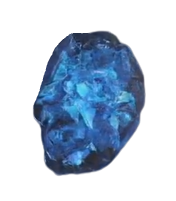 Credit: Marvel Cinematic Universe
Credit: Marvel Cinematic Universe
If you chose the Space Stone as your Warlock Patron, you learn the Guidance and Resistance cantrips. They count as warlock cantrips for you, but they don't count against your number of cantrips known. In addition, the following spells are added to the Warlock Spell list for you:
| Spell Level | Space Stone Spells |
|---|---|
| 1st | Longstrider, Feather Fall |
| 2nd | Levitate, Knock |
| 3rd | Meld into Stone, Nondetection |
| 4th | Arcane Eye, Freedom of Movement |
| 5th | Teleportation Circle, Passwall |
In addition, for your Mystic Arcanum at 11th, 13th, 15th, and 17th levels, you may select a spell from the following list rather than the Warlock Spell List:
| Spell Level | Space Stone Mystic Arcanum |
|---|---|
| 6th | Word of Recall |
| 7th | Teleport |
| 8th | Maze |
| 9th | Gate |
Mind Stone
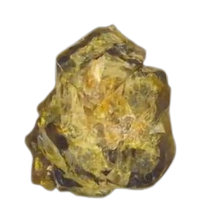 Credit: Marvel Cinematic Universe
Credit: Marvel Cinematic Universe
If you chose the Mind Stone as your Warlock Patron, you learn the Message and Vicious Mockery cantrips. They count as warlock cantrips for you, but they don't count against your number of cantrips known. In addition, the following spells are added to the Warlock Spell list for you:
| Spell Level | Mind Stone Spells |
|---|---|
| 1st | Command, Dissonant Whispers |
| 2nd | Zone of Truth, Detect Thoughts |
| 3rd | Clairvoyance, Sending |
| 4th | Confusion, Dominate Beast |
| 5th | Dominate Person, Modify Memory |
In addition, for your Mystic Arcanum at 11th, 13th, 15th, and 17th levels, you may select a spell from the following list rather than the Warlock Spell List:
| Spell Level | Mind Stone Mystic Arcanum |
|---|---|
| 6th | Otto's Irresistible Dance |
| 7th | Simulacrum |
| 8th | Telepathy |
| 9th | Psychic Scream |
Reality Stone
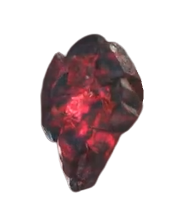 Credit: Marvel Cinematic Universe
Credit: Marvel Cinematic Universe
If you chose the Reality Stone as your Warlock Patron, you learn the Minor Illusion and Dancing Lights cantrips. They count as warlock cantrips for you, but they don't count against your number of cantrips known. In addition, the following spells are added to the Warlock Spell list for you:
| Spell Level | Reality Stone Spells |
|---|---|
| 1st | Disguise Self, Silent Image |
| 2nd | Silence, Phantasmal Force |
| 3rd | Create Food and Water, Phantom Steed |
| 4th | Phantasmal Killer, Polymorph |
| 5th | Creation, Seeming |
In addition, for your Mystic Arcanum at 11th, 13th, 15th, and 17th levels, you may select a spell from the following list rather than the Warlock Spell List:
| Spell Level | Reality Stone Mystic Arcanum |
|---|---|
| 6th | Heroes' Feast |
| 7th | Mirage Arcane |
| 8th | Antimagic Field |
| 9th | Weird |
Power Stone
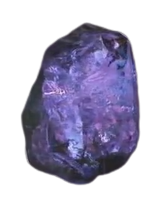 Credit: Marvel Cinematic Universe
Credit: Marvel Cinematic Universe
If you chose the Power Stone as your Warlock Patron, you learn the Primal Savagery and Shocking Grasp cantrips. They count as warlock cantrips for you, but they don't count against your number of cantrips known. In addition, the following spells are added to the Warlock Spell list for you:
| Spell Level | Power Stone Spells |
|---|---|
| 1st | Shield, Wrathful Smite |
| 2nd | Enhance Ability, Branding Smite |
| 3rd | Fireball, Lightning Bolt |
| 4th | Staggering Smite, Stoneskin |
| 5th | Wall of Force, Destructive Wave |
In addition, for your Mystic Arcanum at 11th, 13th, 15th, and 17th levels, you may select a spell from the following list rather than the Warlock Spell List:
| Spell Level | Power Stone Mystic Arcanum |
|---|---|
| 6th | Disintegrate |
| 7th | Divine Word |
| 8th | Earthquake |
| 9th | Meteor Swarm |
Time Stone
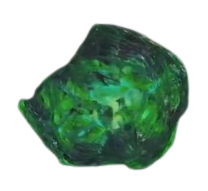 Credit: Marvel Cinematic Universe
Credit: Marvel Cinematic Universe
If you chose the Time Stone as your Warlock Patron, you learn the Spare the Dying and Chill Touch cantrips. They count as warlock cantrips for you, but they don't count against your number of cantrips known. In addition, the following spells are added to the Warlock Spell list for you:
| Spell Level | Time Stone Spells |
|---|---|
| 1st | Cure Wounds, Inflict Wounds |
| 2nd | Lesser Restoration, Gentle Repose |
| 3rd | Haste, Slow |
| 4th | Fabricate, Divination |
| 5th | Greater Restoration, Legend Lore |
In addition, for your Mystic Arcanum at 11th, 13th, 15th, and 17th levels, you may select a spell from the following list rather than the Warlock Spell List:
| Spell Level | Time Stone Mystic Arcanum |
|---|---|
| 6th | Find the Path |
| 7th | Regenerate |
| 8th | Abi Dahlzim's Horrid Wilting |
| 9th | Time Stop |
Soul Stone
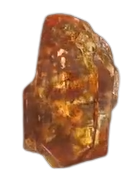 Credit: Marvel Cinematic Universe
Credit: Marvel Cinematic Universe
If you chose the Soul Stone as your Warlock Patron, you learn the True Strike and Toll the Dead cantrips. They count as warlock cantrips for you, but they don't count against your number of cantrips known. In addition, the following spells are added to the Warlock Spell list for you:
| Spell Level | Time Stone Spells |
|---|---|
| 1st | Healing Word, Identify |
| 2nd | Locate Plants or Animals, Healing Spirit |
| 3rd | Life Transference, Spirit Guardians |
| 4th | Locate Creature, Death Ward |
| 5th | Raise Dead, Reincarnation |
In addition, for your Mystic Arcanum at 11th, 13th, 15th, and 17th levels, you may select a spell from the following list rather than the Warlock Spell List:
| Spell Level | Time Stone Mystic Arcanum |
|---|---|
| 6th | Magic Jar |
| 7th | Resurrection |
| 8th | Clone |
| 9th | True Resurrection |
Unarmored Defense
When you choose this patron at 1st level, the power granted to you by the stone protects you from harm. While you are wearing no armor and are not wielding a shield, your AC equals 10 + your Charisma modifier + your Proficiency modifier.
Damage Substitution
When you choose your patron stone at 1st level, you gain the ability to alter the damage type of your Warlock spells. When you cast a Warlock spell that deals damage, you may change the damage type to that associated with your patron stone according to the following table:
| Infinity Stone Patron | Damage Type |
|---|---|
| Space Stone | Radiant |
| Mind Stone | Psychic |
| Reality Stone | Psychic |
| Power Stone | Thunder |
| Time Stone | Necrotic |
| Soul Stone | Necrotic |
Charm-Proof
Starting at 6th level, you are immune to being charmed or frightened.
Buffering Aura
At 10th level the mystical force that protects your body from harm grows in strength. When you are asked to make a Dexterity saving throw, you may instead make a Charisma saving throw.
Body of Infinity
The power of your patron stone has made you nearly impervious to many forms of harm. Beginning at 14th level, when you are subjected to an effect that allows you to make a Charisma saving throw to take only half damage, you instead take no damage if you succeed on the saving throw, and only half damage if you fail.
Pacts of Infinity
The power of the stones is capable of manifesting as a unique pact boon. When you select a pact boon at 3rd level, you may choose the boon which matches the stone chosen as your patron under the Expanded Spell Lists feature:
Pact of Space
Prerequisite: Infinity Stone Patron: Space Stone
You have a habit of not remaining in one place for very long. When you are asked to make a saving throw, you may move a number of feet equal to 5 x your proficiency modifier in any direction. You may use this a number of times equal to your Charisma modifier and regain all expended uses after you complete a long rest.
Pact of Mind
Prerequisite: Infinity Stone Patron: Mind Stone
You are able to telepathically communicate with a number of willing intelligent creatures equal to or less than your Charisma modifier up to a distance in miles equal to your Proficiency modifier. In addition, you may allow these creatures to telepathically communicate with each other in addition to yourself.
In addition, you may attempt to read the thoughts of an unwilling intelligent creature. They must make a Wisdom saving throw versus your spell save DC. If they succeed, their mind is closed to you for a period of 24 hours. If they fail, you can gain a truthful answer - to the extent of that creature's knowledge - to one question.
Pact of Reality
Prerequisite: Infinity Stone Patron: Reality Stone
You are known to craft illusions so convincing they are indistinguishable from reality. Identifying your illusions as false requires an Intelligence saving throw, even if one would not normally be required. In addition, intelligent creatures have disadvantage on ability checks and saving throws against Illusion spells you cast.
Pact of Power
Prerequisite: Infinity Stone Patron: Power Stone
Raw eldritch power flows through you in quantities that are sometimes hard to hold back. You may use your Strength modifier instead of your Charisma modifier for all Warlock features specifying your Charisma modifier, including as your spellcasting modifier. In addition, when you cast a spell that deals damage, you may add your proficiency modifier to the damage dealt.
Pact of Time
Prerequisite: Infinity Stone Patron: Time Stone
You have the ability to look into the future and foresee what awaits you. You may ask the DM the results of any specific action you or your allies might take, such as tripping a trap or attacking an enemy a number of times equal to your proficiency modifier. You regain all expended uses after you complete a long rest.
Understand that the events you foresee can and likely will change if you alter the actions you take, or the timing thereof before the foreseen events take place.
Pact of Soul
Prerequisite: Infinity Stone Patron: Soul Stone
You have the ability to project your soul out of your body at will as an astral projection, though you do not enter the Astral Plane when you do so. The material body you leave behind is Unconscious, but still requires air, food, and water as normal and is considered helpless if attacked. If your material body is slain, you die as well.
Your patron maintains the connection between your soul and body, preventing it from being severed for any reason no matter the distance you travel from it even if you travel to a different plane, and you may return to your material body at any time as a bonus action.
Your astral form is incoporeal and may move through solid objects as if they were difficult terrain. Ending your turn inside a solid object causes you to take 1d10 force damage and your astral form is ejected into the nearest available empty space. Non-magical attacks against your astral form are made with disadvantage and you have resistance to all non-magical damage. You similarly have disadvantage attempting to inflict non-magical damage on corporeal creatures. Attacks from and against other incorporeal creatures are treated as normal combat while you are in this form.
If your astral form is reduced to 0 hit points, you are immediately returned to your material body. Spending more than 12 hours away from your body causes you to gain a level of exhaustion plus an additional level of exhaustion for every additional 24 hours you have been out of your body.
New Invocations:
The following Invocations are available to Warlocks who have chosen one of the Infinity Stones as their patron.
Ageless
Prerequisite: Infinity Stone Patron: Time Stone, 5th level
You are no longer subjected to the effects of aging and cannot die of old age.
Astral Blow
Prerequisite: Infinity Stone Patron: Soul Stone, 9th level
You may attempt to shove another intelligent creature's soul out of their body. You must make a successful unarmed strike against them first before attempting to use this feature. Instead of taking damage, the target must make a Charisma saving throw or have their soul ejected from their body a number of feet up to 10 times your Charisma modifier. Their astral form follows all the same rules detailed under the Pact of Soul Pact Boon, save that they cannot end the effect unless they make contact with their physical body and remain in contact for at least one round or their astral form is reduced to 0 hp. While in their astral form, their body is helpless.
You may use this feature once and must complete a long rest before you can use it again.
Audible Illusion
Prerequisite: Infinity Stone Patron: Reality Stone
Whenever you cast an Illusion spell that does not already include sound, you may add sound to it.
Fist of Power
Prerequisite: Infinity Stone Patron: Power Stone
The size of your unarmed strike's damage die increases by 1, to a minimum of 1d4. When you make your first attack in a round as an unarmed strike and it hits, you may add the full damage of your Eldritch Blast spell to the damage of the unarmed strike and shove the target back a number of feet equal to ten times your Charisma modifier. If you choose to do this, you may not make any other attacks or take a bonus action or reaction that round.
Illusion of Baleful Polymorph
Prerequisite: Infinity Stone Patron: Reality Stone, 15th level
You may expend a Warlock spell slot to cast a highly convincing illusion on another creature that they have been transformed into a helpless shape of your choosing. The target must make an Intelligence saving throw or become Incapacitated for a number of rounds equal to your Charisma modifier. In addition to being incapacitated, on a failure others will percieve the target as being in the shape you chose.
Improved Critical
Prerequisite: Infinity Stone Patron: Power Stone, 9th level
Your spell attacks score a critical hit on a roll of 19 or 20.
Invocation of Infinity
Prerequisite: Infinity Stone Patron, 18th level
Increase your Dexterity and Charisma scores, as well as your maximum Dexterity and Charisma, by 2.
Innate Force
Prerequisite: Infinity Stone Patron: Power Stone, 5th level
The power within you enhances your armed and unarmed attacks. All of your attacks are considered magical for the purpose of overcoming resistance and immunity to non-magical attacks and damage.
Instant Reincarnation
Prerequisite: Infinity Stone Patron: Soul Stone, 15th level
When you cast a spell to return a deceased creature to life, such as Raise Dead or Resurrection, you may change their race, gender, and/or body colorations to those of your choosing.
Mentalist
Prerequisite: Infinity Stone Patron: Mind Stone
You gain proficiency in the Insight and Persuasion skills.
Mental Scrying
Prerequisite: Infinity Stone Patron: Mind Stone, 15th level
You can use your mental might to cast Scrying once without expending a spell slot. You regain use of this feature after you complete a long rest.
Mystic Parkour
Prerequisite: Infinity Stone Patron: Space Stone, 5th level
Difficult terrain, climbing, and swimming no longer cost you extra movement.
Olfactory Illusion
Prerequisite: Infinity Stone Patron: Reality Stone, 5th level
Whenever you cast an Illusion spell that does not already include smell, you may add smell to it.
Overflowing Power
Prerequisite: Infinity Stone Patron: Power Stone, 15th level
Whenever you deal damage that does not already include your Charisma modifier, you may add your Charisma modifier to the damage.
Reverse Time
Prerequisite: Infinity Stone Patron: Time Stone, 9th level
If an object has been broken with the last (your Charisma modifier) minutes, you may restore it to the same condition it was before it was broken. Alternatively, you may return one creature to life that has died within the last (your Charisma modifier) minutes at the same hit points it had right before it died.
You may use this feature once and must complete a long rest before you can use it again.
Self Soul Bind
Prerequisite: Infinity Stone Patron: Soul Stone
Your soul is rather firmly connected to your body and this connection can only be severed by force. You automatically succeed on all Death saving throws and cannot die from exhaustion. If you would normally die from exhaustion, you instead fall unconscious and sleep for a number of days equal to your levels of exhaustion.
Soul Sense
Prerequisite: Infinity Stone Patron: Soul Stone, 5th level
You may touch a willing creature and know their true form as well as any spells currently affecting them. If the creature is unwilling, they must make a Charisma saving throw to obscure this information from you.
Space Aura
Prerequisite: Infinity Stone Patron: Space Stone, 9th level
You may use your reaction to halve the damage of an attack made against you. You do not need to see the attack to use this feature.
Tactile Illusion
Prerequisite: Infinity Stone Patron: Reality Stone, 9th level
Whenever you cast a visible illusion spell, you can make it feel real. Any creature who makes contact with the illusion must make an Intelligence saving throw. On a failure they treat the illusion as solid for one minute.
You may also command such illusions to attack as a bonus action using your Charisma modifier as the attack ability. On a hit, the target must make an Intelligence saving throw or take 1d4 + your Charisma modifier Psychic damage.
The illusion has an AC of 10 + your Charisma modifier and is immediately dispelled if it takes any damage.
Telepath
Prerequisite: Infinity Stone Patron: Mind Stone, 5th level
You may cast Detect Thoughts at will without expending a spell slot.
Telepathic Bond
Prerequisite: Infinity Stone Patron: Mind Stone, 9th level
You may cast Rary's Telepathic Bond as a ritual.
Temporal Scrying
Prerequisite: Infinity Stone Patron: Time Stone, 15th level
You may spend 10 minutes gazing into possible futures to cast Commune as a ritual. The answers you gain must be those that would be possible - however remotely - for you to learn yourself in the future.
Gazing into the future in this way can be a harrowing experience and you may use this feature once and must complete a long rest before using it again.
Time Loop
Prerequisite: Infinity Stone Patron: Time Stone
After you fail a d20 roll, even if the results have been announced, you may choose to re-roll it. You must take the new roll unless you spend another use of this ability.
You may use this ability a number of times equal to half your proficiency modifier, rounded down. You regain all spent uses after you complete a long rest.
Unbound by Gravity
Prerequisite: Infinity Stone Patron: Space Stone, 15th level
You may cast Fly on yourself at will, without expending a Warlock spell slot.
Void Life
Prerequisite: Infinity Stone Patron: Space Stone
You no longer need to breathe, eat, drink, or sleep.
Spirit of Vengeance
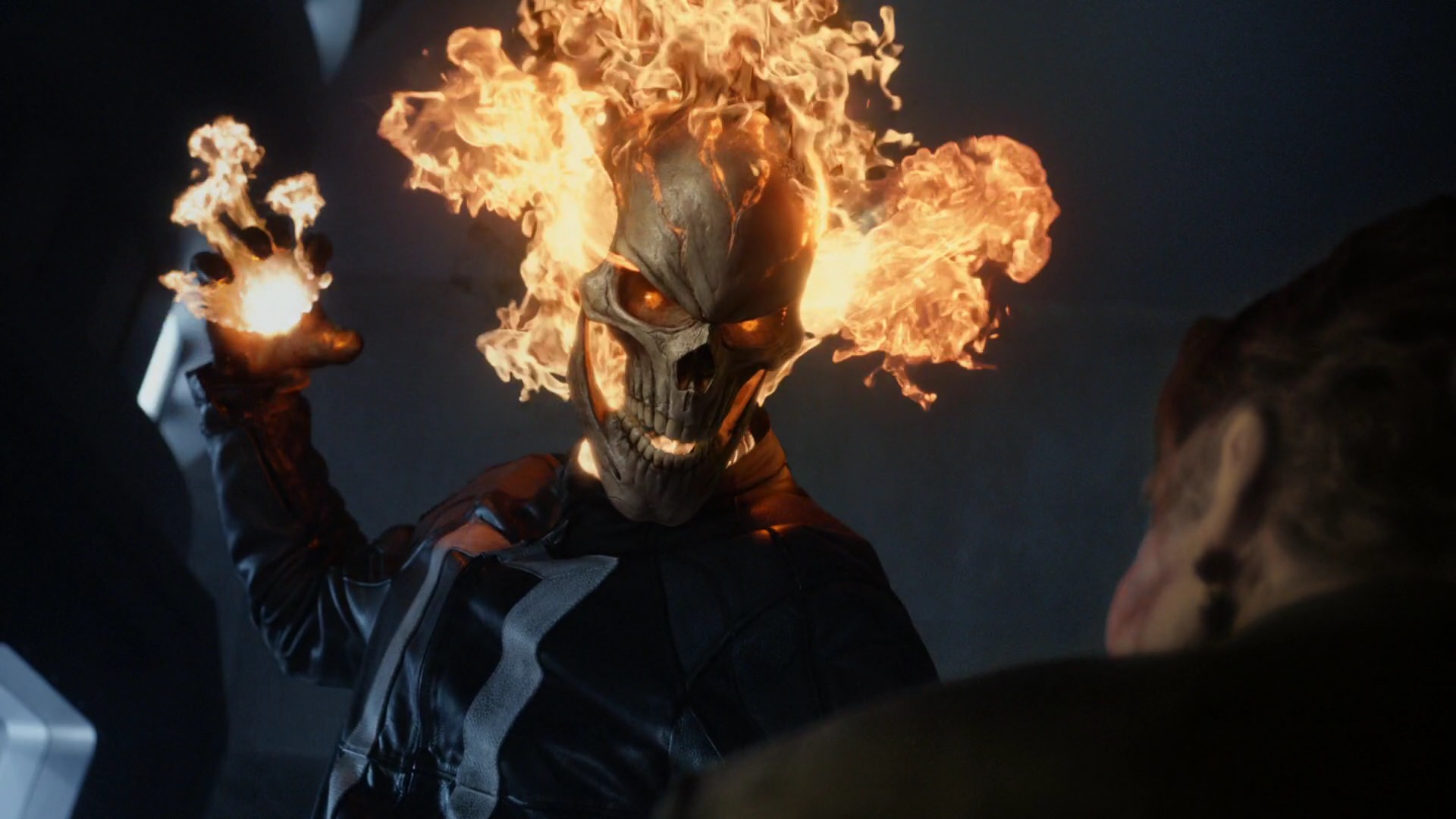
Credit: Marvel Cinematic Universe
Ronnie Reyes, the Ghost Rider was a fun archetype to make. His origin is practically textbook Warlock too.
You have made a pact with the Spirit of Vengeance for the power to unleash retribution against those who have wronged you. The spirit does not deal with those who desire his power for petty reasons, only those with grievances that legitimately demand the blood of sinners in repayment. Beyond that, the spirit cares little for the moral alignment of those who contract with him.
Expanded Spell List
The Spirit of Vengeance lets you choose from an expanded list of spells when you learn a warlock spell. The following spells are added to the warlock spell list for you.
| Spell Level | Vengeance Spells |
|---|---|
| 1st | Bane, Wrathful Smite |
| 2nd | Branding Smite, Flame Blade |
| 3rd | Bestow Curse, Blinding Smite |
| 4th | Staggering Smite, Wall of Fire |
| 5th | Hallow, Immolation |
Note: If you do not take the Pact of the Wheel Pact Boon, replace the Branding Smite and Staggering Smite spells from the above list with the Find Steed and Find Greater Steed spells.
Night Rider
When you choose this patron at 1st level, you may gain proficiency in either Vehicles (Land) or Animal Handling if you didn't have them already.
Avatar of Vengeance
Your deal with the Spirit of Vengeance marks you in a unique way. You have advantage on all death saving throws, have resistance to fire and necrotic damage, can grapple with incorporeal creatures, and you are able to transform using a bonus action.
When you transform, your creature type becomes Fiend in addition to your normal creature type, you become immune to fire damage, and your appearance becomes that of a flaming skeleton of your race. Clothes and armor you wear are unaffected by these flames.
In this state, you may ignite objects that can burn, like torches, by touching them as a bonus action and melee weapon attacks you make are considered magical and deal an additional 1d4 fire damage. This extra damage increases to 1d6 at 5th level, 1d8 at 11th level, and 1d10 at 17th level.
While transformed, you may use a bonus action to look an intelligent creature in the eyes and make a Wisdom (Insight) check against their passive Deception to determine that creature's moral alignment. Success reveals their alignment, failure gives you an impression of undetermined. You may use this feature a number of times equal to your Wisdom modifier (minimum of 1) and regain all spent uses after a short or long rest.
Finally, when you cast a Warlock spell that deals damage while transformed, you may choose to have the spell deal fire damage instead of its normal damage type.
The transformation lasts a number of minutes equal to your proficiency bonus + your Charisma modifier unless you choose to end it as a bonus action. You may use this transformation once and regain use of it after a short or long rest.
Phantom Rider
Starting at 6th level, if you have Pact of the Wheel, you gain Expertise in all Vehicles you have or gain proficiency in. You may also ignore all difficult terrain when operating vehicles you are proficient in while transformed.
In addition, while operating a vehicle you are proficient in and asked to make a saving throw, you may replace the saving throw with a Vehicles (Land) ability check using the appropriate ability score modifier.
If you do not have Pact of the Wheel: If you are proficient in Animal Handling, you double your proficiency bonus for all Animal Handling checks you make while mounted and ignore all difficult terrain while riding your mount.
In addition, when riding a steed and asked to make a saving throw, you may replace the saving throw with an Animal Handling ability check using the appropriate ability score modifier.
Ghost Rider
Starting at 10th level, when you are asked to make a saving throw to take only half damage while operating a vehicle, you instead take no damage if you succeed on the saving throw, and only half damage if you fail.
The benefits of this feature apply to any passengers in the vehicle you are operating or on the steed you are riding.
In addition, you automatically succeed on all death saving throws.
If you do not have Pact of the Wheel: Replace the mention of a vehicle you are operating with a steed you are riding.
Penance Stare
Starting at 14th level, you may judge an intelligent creature by staring straight into their soul as an action and burn their soul directly if they are found guilty.
The creature must make a Charisma saving throw, taking 5d10 fire and 5d10 necrotic damage on a failure and half that on a success. In addition, if the creature fails it gains two levels of exhaustion and cannot heal until they remove all levels of exhaustion. Neutrally aligned creatures on the Good/Evil axis automatically succeed on this saving throw. Good aligned and unaligned creatures are unaffected.
You may use this feature once and cannot use it again until you complete a long rest.
Undying Vengeance
When you reach 14th level, you are nearly impossible to kill. When you are reduced to 0 hit points and not killed outright, you may choose to be reduced to 1 hit point instead. Once you use this feature, you can't use it again until you finish a long rest.
New Pact Boon:
At 3rd level, you may select the following Pact Boon:
Pact of the Wheel
You can use your action to summon a fiendish land vehicle with flaming wheels. The vehicle needs no fuel or beast to pull it and can accomodate a single rider. The vehicle has the base speed of a horse and while operating it you can take the Dash action as a bonus action. The vehicle counts as magical for the purposes of any damage it deals to any creature as a result of impact, and it deals fire damage equal to your Charisma modifier in addition to the normal damage its impact would deal. Anything the vehicle drives over that is prone to igniting, such as oil, does so.
Your pact vehicle vanishes if you are more than 20 feet away from it for more than one minute. It also disappears if you use this feature again, if you dismiss the vehicle (no action required), or if you die.
You may transform another ordinary vehicle into your pact vehicle by performing a special ritual. You perform the ritual over the course of 1 hour, which can be done during a short rest, and the vehicle's appearance changes to reflect its new fiendish nature such as wheels turning to flames or other appropriately fiendish traits. The vehicle no longer requires fuel or beasts to pull it while in this form, but it otherwise acts like a normal vehicle of its type in regards to what it can carry. You can dismiss the vehicle, shunting it into an extradimensional space until you summon it again, or you may choose to hide its new fiendish nature by allowing it to return to its former appearance. Rather than vanishing when you move away from it, the vehicle will - after a minute - automatically return to its mundane appearance until you call upon it again. The vehicle ceases to be your pact vehicle if you die, if you perform the 1-hour ritual on a different vehicle, or if you use the 1-hour ritual to break your bond with it. If it is in its extradimensional space when you break your bond, it appears in the nearest unpccupied space that can accomodate it.

Credit: Marvel Cinematic Universe
New Invocations
The following invocations are added for this patron:
Fiendish Fury
Prerequisite: Spirit of Vengeance Patron
When you wield a melee weapon you are proficient in while transformed, you may attack twice instead of once when you use the Attack action on your turn.
Hell Bent for Leather
Prerequisite: Spirit of Vengeance Patron
While transformed and wearing no armor or light armor, you may add your Charisma modifier to your AC. You may not use a shield and gain this benefit.
Hell Trunk
Prerequisite: Pact of the Wheel, 15th level
Your pact vehicle gains a storage space sufficient to hold a medium creature if it didn't already have one. You can place a medium or smaller enemy creature into the storage space while grappling them to transport the target through the lower planes. The creature disappears and hurtles through a nightmare landscape until you choose to remove them from the storage space as an action. If the target is not a fiend, it takes 10d10 psychic damage as it reels from its horrific experience. The target does not need to breathe while in the space, but it does still need to eat and drink.
Once you use this feature, you can't use it again until you finish a long rest.
Pact of the Sail
Prerequisite: Pact of the Wheel, 7th level
You gain proficiency in Vehicles (Water) and you may summon or bind water vehicles using your Pact of the Wheel feature.
Pact of the Wing
Prerequisite: Pact of the Wheel, 12th level
You gain proficiency in Vehicles (Air) and you may summon or bind air vehicles using your Pact of the Wheel feature.
Wizard Arcane Traditions
Wizards. The class that bends reality through sheer force of will into whatever suits them best at the time. While far from being as omnipotent as many of them would like to believe they are, in the history of tabletop roleplaying there has never been a class that is as versatile in what it can bring to the table regardless of the situation at hand.
Imagination Tradition
 Credit: Marvel Cinematic Universe
Credit: Marvel Cinematic Universe
Stan Lee. Stan the Man. One of the founders of Marvel Comics and considered to be a real life hero by many. If there is absolutely anyone who deserves to be called a wizard, it's him. He will be greatly missed.
Wizards of the Imagination tradition like to experiment with magic and seek knowledge for the sake of fueling their endless imagination.
Arcane Inspiration
When you take this tradition at 2nd level, you become proficient in imagining new uses for your magical power. Whenever you gain a new Wizard level, including this one, you may add one additional Wizard spell to your spellbook for free.
Barrel of Exposition
When you join this tradition at 2nd level, you become a fountain of knowledge. You may gain proficiency in up to three of the following Skills: Arcana, Religion, Nature, History.
When you reach 10th level, you may choose two of those Skills. You double your proficiency bonus for ability checks involving the chosen Skills.
Powers as the Plot Demands
Starting at 6th level, you may learn a number of additional cantrips from the Wizard spell list up to your Intelligence modifier. These cantrips do not count against your number of cantrips known.
You do not have to select these cantrips immediately and may postpone their selection until you encounter a situation where a particular cantrip would be useful. Once a cantrip is chosen, you may not change your selection. You may continue to learn cantrips in this manner so long as the total number of cantrips you have learned with this feature is less than your Intelligence modifier.
In addition, you may exchange one of your prepared spells that you have not yet cast for another spell you could have prepared from your spellbook. You may do this a number of times equal to your proficiency modifier and regain all uses the next time you prepare spells.
Arcane Typo
When you reach 10th level, you gain the ability to alter spells by subtly changing the way you cast them.
When you cast a spell, you may change, add, or remove one letter in the spell's name to produce a new effect related to the new spelling. The GM has final say in how the effects manifest and may require you to expend a spell slot of different level to cast the new spell.
You may use this feature a number of times equal to half your proficiency modifier, rounded down, and regain all uses after you complete a long rest.
Omnipresence
Starting at 14th level, you always seem to be wherever you need to be. As a bonus action, you can simply appear in a location so long as the following criteria are met:
- Other intelligent creatures are present at your destination.
- No intelligent creature present is able to perceive your appearance at your destination.
- No intelligent creature is able to percieve your disappearance from your current location.
- You are not currently suffering from a status condition, engaged in battle, casting a spell, concentrating, or making an ability check.
- Your destination is not warded against magical effects such as teleportation.
You may use this feature once and regain the ability to do so after you complete a short or long rest.
Universal Archetype
Partway through this project, I had something of a mad idea. What if it were possible to make an archetype designed to be attached to any class? Well, I had to give it a shot at least. Be warned though, this entire archetype is experimental and may not be balanced at all. It is the one I most desire feedback on (with the Infinity Stone Patron being a close second).
Agent of S.H.I.E.L.D.

Credit: Marvel Cinematic Universe
Highly Experimental
This is an experiment in creating a Universal archetype that can work with any base class. There may look like a lot of features, but not every class will hit every feature level (and Cleric hits the lower levels multiple times). As such, I have done my best to present this in a way that allows for flexibility in attaching it to existing (and perhaps even homebrew) classes.
I have done my best to note which classes among the base 12 (+ Artificer and Mystic) get which feature levels.
Basic Training
When you gain this archetype at 1st, 2nd, or 3rd level (as appropriate for your base class), you gain proficiency in all simple weapons, light armor, and shields if you didn't already have proficiency in them. You also gain proficiency in two of the following Skills: Stealth, Perception, Deception, Investigation, Insight, Medicine, Thieves' Tools, or the Disguise Kit.
Special: If your base class is Artificer, you must select the Disguise Kit as one of your above proficiencies and you also gain proficiency in the Forgery Kit as well as the related Tool kits for your equipment list. Forgeries you create will readily stand up to even magical scrutiny unless the creature succeeds on an Intelligence (Investigation) check against your passive Intelligence (Forgery Kit) value.
Special: If your base class is Bard, you may gain proficiency in an additional two Skills from the above list and one Tool of your choice.
Special: If your base class is Mystic, you also gain one Psionic discipline of your choice from the following list: Aura Sight, Brute Force, Celerity, Mantle of Command, Mantle of Fury, Mastery of Force, Nomadic Chameleon, Third Eye
In addition, if your base class has the spellcasting feature, you may learn/prepare your spells using the Artificer spell list in addition to your base class's regular spell list as appropriate for your base class.
Furthermore, if your campaign allows firearms, you gain proficiency in all firearms.
Finally, all agents gain a Badge of Office as part of their standard equipment when they take this archetype.
Agent Spells
If your base class has a spellcasting feature that is neither Pact magic nor uses a spellbook (i.e. not Warlock or Wizard) then you gain the following spells at the relevant levels. You know these spells and always have them prepared and they do not count against your number of spells known or spells prepared (as appropriate for your base class).
| Full Caster Level | Half Caster Level | Agent Spells |
|---|---|---|
| 1sr | 3rd | Identify, Detect Magic |
| 3rd | 5th | Knock, Zone of Truth |
| 5th | 9th | Feign Death, Tongues |
| 7th | 13th | Freedom of Movement, Leomund's Secret Chest |
| 9th | 17th | Scrying, Skill Empowerment |
Rookie Agent (1st-3rd level)

Credit: Marvel Cinematic Universe
Note: Every base class gets this feature at least once. Cleric gets it twice, once at 1st level and then Channel Divinity at 2nd level. Mystic also gets it twice, once at 1st level and again at 3rd level.
When you would gain an archetype feature at 1st, 2nd, or 3rd level in your base class, you may select one of the following options and gain its effects.
Special: If your base class is Cleric or Paladin, you MUST select the Channel Divinity option for your 2nd or 3rd level archetype feature respectively.
Special: If your base class is Mystic, the option you select for your 1st level archetype feature MUST be Combat Training.
Channel Divinity
Special: You may not select this feature as a 1st level archetype feature. This feature is mandatory at 2nd level if your base class is Cleric and at 3rd level if your base class is Paladin.
When you gain this feature, you may use your Badge of Office as a Holy Symbol.
Your dedication as an agent allows you to channel divine energy to fuel magical effects. If your base class is Cleric, you gain one Channel Divinity option listed below of your choice, otherwise you gain both. Each Channel Divinity option provided explains how to use it. When you use your Channel Divinity, you choose which option to use. You must then finish a short or long rest to use your Channel Divinity again. Some Channel Divinity effects require saving throws. When you use such an effect from this feature, the DC equals 8 + your proficiency bonus + your Intelligence modifier.
Channel Divinity: Turn Foe
As an action, you may present your Badge of Office and declare your allegiance and intent. Each hostile intelligent humanoid that can see or hear you within 30 feet of you must make a Wisdom saving throw. If the creature fails its saving throw, it is turned for 1 minute or until it takes any damage.
A turned creature must spend its turns trying to move as far away from you as it can, and it can't willingly move to a space within 30 feet of you. It also can't take reactions. For its action, it can use only the Dash action or try to escape from an effect that prevents it from moving. If there's nowhere to move, the creature can use the Dodge action.
Channel Divinity: Voice of Authority
As an action you may present your Badge of Office and speak in a loud, clear, and firm voice, to gain the attention of all persons who can hear your voice. The effect typically applies for thirty feet for full effect, and an additional sixty feet for reduced effect. This range can be affected by vocal amplification both mundane and magical (a standard megaphone will increase the base range by an additional thirty feet while the effects of a Silence spell will negate the ability). Walls and other physical barriers block the effect unless you have sufficient amplification to be heard clearly through them.
All intelligent creatures who can hear you and are not actively hostile towards you will instinctively consider you a person of authority and will be inclined to listen to you and follow any reasonable request you make of them. This is not a charm effect and any creature who reasonably concludes that following your instructions is detrimental to them may ignore you without requiring a saving throw.
If any affected creature within range of this effect is affected by a fear or charm condition at the time and for one minute afterwards, they may immediately make a new saving throw with advantage and adding your Charisma bonus to their total result.
Combat Training
Special: If your base class is Mystic, this feature is mandatory as your 1st level option.
You gain proficiency in all Martial Weapons and Medium Armor. In addition, you may select one Fighting Style from the Fighter list that you do not already possess and gain its benefits.
Sneak Attack
You may only select this option if your base class does not possess the Sneak Attack feature. You have learned how to strike subtly and exploit a foe's distraction. Once per turn, you can deal an extra 1d6 damage to one creature you hit with an attack if you have advantage on the attack roll. The attack must use a finesse or a ranged weapon.
You don't need advantage on the attack roll if another enemy of the target is within 5 feet of it, that enemy isn't incapacitated, and you don't have disadvantage on the attack roll.
The amount of the extra damage increases to 2d6 at 9th level and to 3d6 at 15th level.
Specialist Training
You may gain Expertise in up to two Skills or Tools you learned as part of the Basic Training feature.
Spellcasting
Special: This feature may only be chosen if your base class does not have the Spellcasting, Psionics, or Ki features, such as a Fighter or Rogue. You learn to augment your martial prowess with the ability to cast spells.
Cantrips. You learn two cantrips of your choice from the artificer spells. You learn an additional artificer cantrip of your choice at 10th level.
Spell Slots. The Agent Spellcasting table below shows how many spell slots you have to cast your spells of 1st level and higher. To cast one of these spells, you must expend a slot of the spell’s level or higher. You regain all expended spell slots when you finish a long rest.
For example, if you know the 1st-level spell shield and have a 1st-level and a 2nd-level spell slot available, you can cast shield using either slot.
Spells Known of 1st-Level and Higher. You know three 1st-level artificer spells of your choice.
The Spells Known column of the Agent Spellcasting table shows when you learn more artificer spells of 1st level or higher.
Whenever you gain a level in this class, you can replace one of the artificer spells you know with another spell of your choice from the artificer spell list. The new spell must be of a level for which you have spell slots.
Spellcasting Ability. Intelligence is your spellcasting ability for your artificer spells, since you learn your spells through study and memorization. You use your Intelligence whenever a spell refers to your spellcasting ability. In addition, you use your Intelligence modifier when setting the saving throw DC for a artificer spell you cast and when making an attack roll with one.
Spell save DC = 8 + your proficiency bonus + your Intelligence modifier Spell attack modifier = your proficiency bonus + your Intelligence modifier
Agent Spellcasting Table
| Base ClassLevel | Cantrips Known | Spells Known | Spell 1st | Slots 2nd | Per 3rd | Level 4th |
|---|---|---|---|---|---|---|
| 3rd | 2 | 3 | 2 | - | - | - |
| 4th | 2 | 4 | 3 | - | - | - |
| 5th | 2 | 4 | 3 | - | - | - |
| 6th | 2 | 4 | 3 | - | - | - |
| 7th | 2 | 5 | 4 | 2 | - | - |
| 8th | 2 | 6 | 4 | 2 | - | - |
| 9th | 2 | 6 | 4 | 2 | - | - |
| 10th | 3 | 7 | 4 | 3 | - | - |
| 11th | 3 | 8 | 4 | 3 | - | - |
| 12th | 3 | 8 | 4 | 3 | - | - |
| 13th | 3 | 9 | 4 | 3 | 2 | - |
| 14th | 3 | 10 | 4 | 3 | 2 | - |
| 15th | 3 | 10 | 4 | 3 | 2 | - |
| 16th | 3 | 11 | 4 | 3 | 3 | - |
| 17th | 3 | 11 | 4 | 3 | 3 | - |
| 18th | 3 | 11 | 4 | 3 | 3 | - |
| 19th | 3 | 12 | 4 | 3 | 3 | 1 |
| 20th | 3 | 13 | 4 | 3 | 3 | 1 |
Experienced Agent (6th-8th level)

Credit: Marvel Cinematic Universe
Note: Every base class gets this feature at least once, Cleric gets it twice.
When you would gain an archetype feature at 6th, 7th, or 8th level in your base class, you may select the feature from one of the options below. Alternatively, you may instead select one of the options listed under Rookie Agent that you do not already possess.
Special: If your base class is Cleric, you will gain features from this list twice, once at 6th level and once at 8th level. You may not select the same feature for both.
Action Surge
You may only select this option if you do not already possess it as a base class feature. On your turn, you can take one additional action on top of your regular action and a possible bonus action. Once you use this feature, you must finish a short or long rest before you can use it again.
Bonus Feat
If your campaign allows Feats, you may select one Feat that you qualify for and gain its benefits.
Extra Attack
You may only select this feature if you do not already have the Extra Attack feature from your base class. You can attack twice, instead of once, whenever you take the Attack action on your turn.
Soul of Macgyver
You do not suffer any penalty to ability checks as a result of using improvised tools. In addition, you gain proficiency in Improvised weapons if you did not already have it and you may add half your proficiency bonus to an ability check involving a Tool you are not already proficient in.
If you lack any tool or improvised equivalent, then you may attempt to spend at least one minute fabricating the desired object from items you can salvage or scrounge from the surrounding area. You roll an Intelligence check and add your proficiency modifier against an appropriate DC depending on the item's complexity:
| Complexity | DC |
|---|---|
| Simple Crude Item (Club) | 5 |
| Simple Item (Arrows) | 10 |
| Mildly complex item (Shortbow) | 15 |
| Moderately complex item (Siege weapon) | 20 |
| Very complex item (Simple Clock) | 25 |
| Extremely complex item (Delicate clockwork mechanism) | 30 |



Credit: Marvel Cinematic Universe
Professional Agent (10th-11th level)

Credit: Marvel Cinematic Universe
Note: The base classes that gain this feature are Barbarian, Druid, Fighter, Monk, Ranger, Rogue, Warlock, and Wizard.
When you would gain an archetype feature at 10th or 11th level in your base class, you may select the feature from one of the options below. Alternatively, you may instead select one of the options listed under Experienced Agent that you do not already possess.
Expertise
Choose two of your skill proficiencies. Your proficiency bonus is doubled for any ability check you make that uses either of the chosen proficiencies.
Extra Attack (2)
You may only select this option if you already possess the Extra Attack feature. You may attack up to three times on your turn when you take the Attack action.
Elite Agent (14th-15th level)

Credit: Marvel Cinematic Universe
Note: The base classes that gain this feature are Artificer, Barbarian, Bard, Druid, Fighter, Mystic, Paladin, Ranger, Rogue, Sorcerer, Warlock, and Wizard.
When you would gain an archetype feature at 14th or 15th level in your base class, you may select the feature from one of the options below. Alternatively, you may instead select one of the options listed under Experienced Agent or Professional Agent that you do not already possess.
Die Hard
When you are reduced to 0 hp and not killed outright, you may drop to 1 hp instead. You must complete a long rest before using this feature again.
Resilient Agent
You gain proficiency in one saving throw of your choice.
Use Magic Device
You ignore all class, race, and level requirements on the use of magic items.
Legendary Agent (17th-18th level)

Credit: Marvel Cinematic Universe
Note: The base classes that gain this feature are Cleric, Fighter, Monk, and Sorcerer.
When you would gain an archetype feature at 17th or 18th level in your base class, you may gain one Feat that you qualify for (if your campaign allows Feats). Alternatively, you may instead select one of the options listed under Professional Agent or Elite Agent that you do not already possess.

Credit: Marvel Cinematic Universe
Fury of S.H.I.E.L.D.

Credit: Marvel Cinematic Universe
Note: The only base class that gains this feature is Paladin.
When you would gain an archetype feature at 20th level, you gain this feature.
You may use an action to pull the world around you into a focus so sharp it could cut the unwary. For one minute you gain the following benefits:
- You are considered to be under the effects of a Haste spell.
- You have advantage on all attacks and ability checks.
- Enemies have disadvantage on saving throws against spells you cast.
- You gain temporary hp equal to your Constitution score.
- You may halve the damage of one successful attack againt you each round.
- You may use your bonus action to take the Dash, Disengage, Hide, Dodge, Use Item, or Help action.
- You may take an extra reaction each round.
You may not use this feature again until you have completed a long rest.
Fun Archetype Facts
When I was doin research for this archetype, I of course had to do research over when each of the base classes gained an archetype feature. Here's a breakdown of what I found:
1st level: 4 (Cleric, Mystic [+Bonus Disciplines], Sorcerer, Warlock)
2nd level: 3 (Cleric [1/2 Channel Divinity], Druid, Wizard)
3rd level: 9 (Artificer, Barbarian, Bard [+Extra Proficiencies], Fighter, Monk, Mystic, Paladin [Channel Divinity], Ranger, Rogue)
6th level: 10 (Artificer, Barbarian, Bard, Cleric, Druid, Monk, Mystic, Sorcerer, Warlock, Wizard)
7th level: 4 (Fighter, Paladin, Ranger, Rogue)
8th level: 1 (Cleric)
10th level: 6 (Barbarian, Druid, Fighter, Rogue, Warlock, Wizard)
11th level: 2 (Monk, Ranger)
14th level: 7 (Artificer, Barbarian, Bard, Druid, Mystic, Warlock, Wizard)
15th level: 3 (Fighter, Paladin, Ranger)
17th level: 2 (Cleric, Monk)
18th level: 2 (Fighter, Sorcerer)
20th level: 1 (Paladin)
Agents of HYDRA
Credit: Marvel Cinematic Universe
HYDRA, the terrorist organization from the Marvel universe bent on world domination and practically synonimous with Nazis, often appearing to be allies or even friends of the heroes.
Since the tools of the hero can also serve a villain equally well, there is no reason why an antagonist cannot make just as much use of the archetypes in this document as a player character.
Some tips for creating the best possible challenge:
- Grant the character the maximum possible hp for their class and level.
- Allow the character to possess a few abilities a character of their class would not normally have.
- Give them enough allies to really challenge the PCs.
- Have an exit plan ready for them to attempt escape.
S.H.I.E.L.D.'s Armory
Because how could I reference S.H.I.E.L.D. without talking about all of their awesome toys? What follows is a list of magic to modern items that are meant to reflect the amazing equipment found in the MCU both on the side of the heroes and the villains.
Currently Under Construction
Watch this space for developments.

Credit: Marvel Cinematic Universe
The following items may be macigal or technological in nature depending on the setting, though if your setting does not at least have Artificers doing regular work or is not a modern setting, then it is unlikely any of these items exist at all.
Darkhold
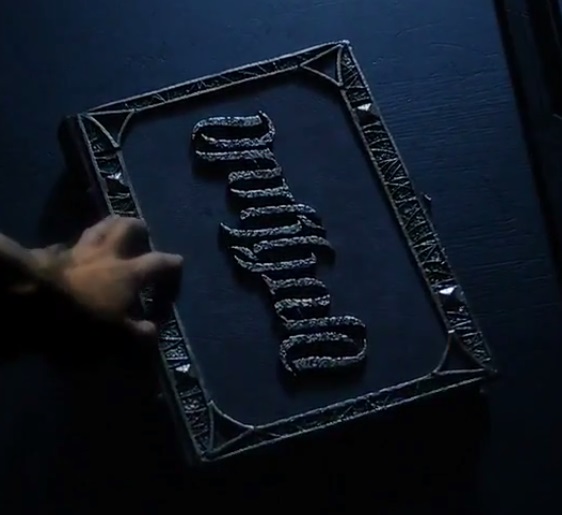
Credit: Marvel Cinematic Universe
Legendary Artifact
The Darkhold is a legendary book that supposedly contains all knowledge in creation, including forbidden knowledge. It is also believed to be potentially sentient and thus extremely dangerous.
Anyone who attempts to read the book will find it sharing exactly the knowledge they most desire upon opening it to any page. The information will always be presented in the form of the reader's first language even if multiple people are reading it at the same time.
All creatures who read the book must make a Charisma saving throw the first time they open the book and again for every minute they spend reading it, even if they are not normally a creature that possesses a will of their own.
The DC for the saving throw starts at 13 and increases by 1 for every day the reader has previously spent time reading the book. Failing the saving throw at any point causes the reader to become obsessed with the book and its contents, ignoring any and all dangers posed by the knowledge they gain from its pages as they delve progressively deeper into the book's endless mysteries.
Someone who has fallen under the book's sway may attempt to break free by making a new saving throw at disadvantage, but with all other modifiers detailed above still applying. If successful, they can resist the lure of the book for 24 hours before they must make a new saving throw regardless of whether or not they have read the book again. Casting Remove Curse on the affected individual either removes disadvantage or grants advantage on the saving throw as appropriate.
The affected individual must succeed on five consecutive saving throws to fully break free of the book's lure.
There is no known method for destroying the Darkhold.
Energy Shield
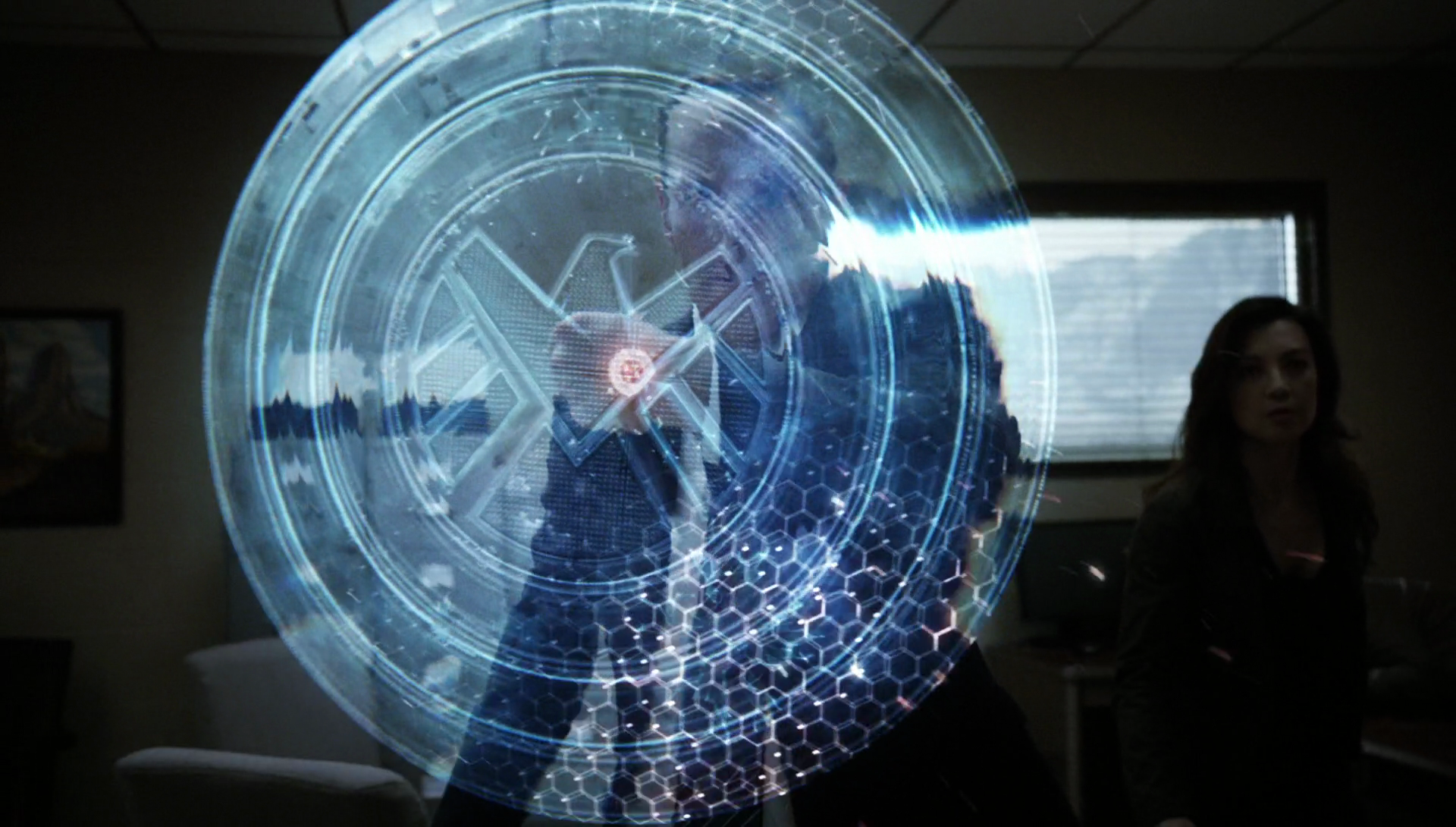
Credit: Marvel Cinematic Universe
This item is capable of manifesting a protective energy field the size of a full shield as a reaction. The most basic variety acts as a +1 shield while active and requires proficiency in shields to be used properly. Varieties that act as +2 shields also exist.
The energy field lasts for up to 1 minute or until dismissed as a bonus action or reaction. The item contains a maximum of 3 to 5 charges and regenerates all spent charges at dawn.
Howling Commandos Gear

Credit: Marvel Cinematic Universe
Cigarette Laser
EMP Joy Buzzer
Hand-held Hypno Beam
Holographic Cards
Noisemaker
UHF Pin
Quarter Walkie-Talkie
Portable X-Ray Scanner
Transistorized Blast Gun
Zip-Line Gun
At first glance, the Zip-Line gun appears to be a heavy crossbow that fires spear-sized bolts and a creature hit with the bolt will take 1d12 piercing damage.
However, these bolts are capable of embedding themselves into nearly any surface, including solid stone, and trail a rope up to 400 feet in length that can then be used to traverse the distance from the shooter to the target. This works best if the target is at a lower elevation than the shooter.

Credit: Marvel Cinematic Universe
Kevlar Armor
This tightly woven cloth armor is capable of stopping some types of firearm ammunition. It is considered Light Armor and grants AC equal to 13 + the wearer's Dexterity modifier.
It is typically valued at 75-100 gp and a full suit weighs roughly 15 lbs.
Prosthetic Limbs

Credit: Marvel Cinematic Universe
Losing a limb doesn't have to be crippling for your adventurer. If they have access to the resources, they can get arcanomagical prosthetics that are just as good, or perhaps even better, than their originals.
The most basic form of these replacement limbs are just as strong as the character's original limbs in physical ability if not in appearance. Rarer varieties may grant +1, +2, or +3 bonuses to Strength-based attack rolls and ability checks made with that specific limb.
These bonuses do not stack with each other if multiple limbs are used for the roll.
Shotgun Axe
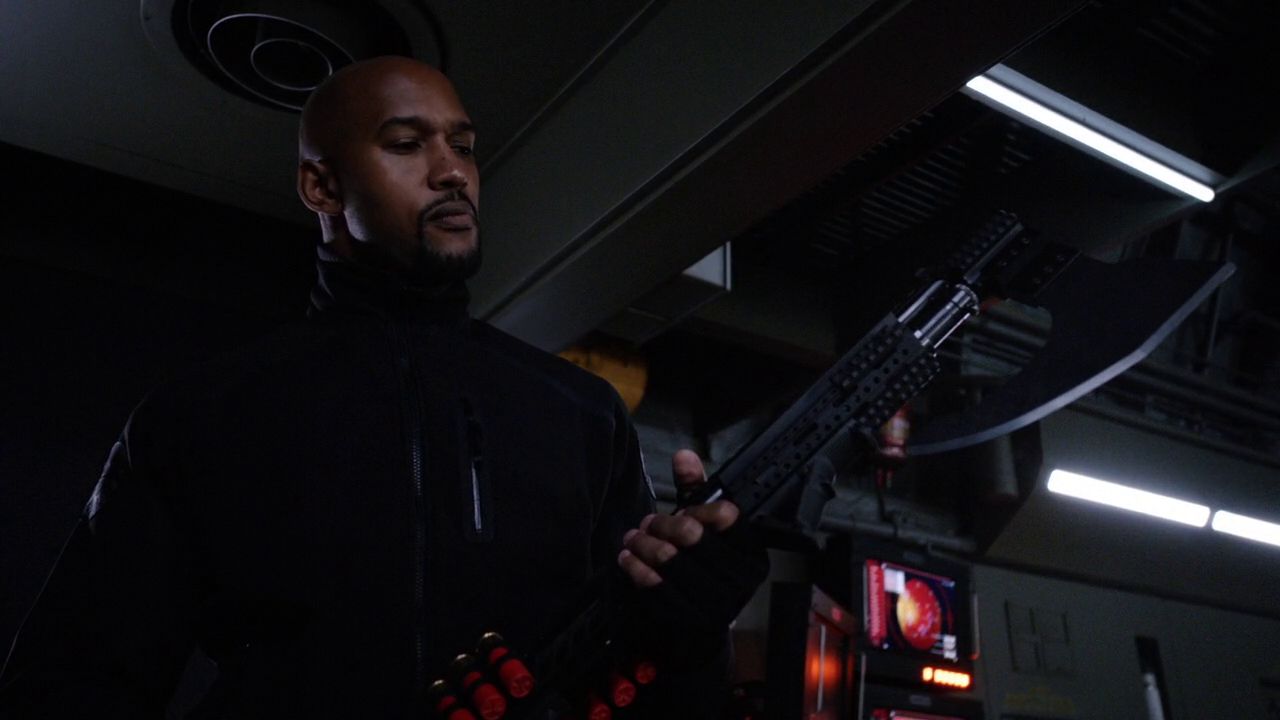
Credit: Marvel Cinematic Universe
Properties:
- Exotic Weapon (Shotgun & Axe) - Proficiency in either of these two weapons allows for use of half proficiency in attack rolls made with this weapon.
- Cost: 100 gp
- Loading
- Melee - d10 Slashing
- Ranged - d12 Bludgeoning, 20/60
- Two-Handed
- Special: Can change Melee damage type to piercing as a bonus action.
Sniper Rifle

Credit: Marvel Cinematic Universe
Properties:
- Martial Firearm
- Cost: 200 gp
- Loading
- Ranged: d10 Bludgeoning, 600/2500
- Special: This weapon has disadvantage on attack rolls against targets closer than 100 feet.
- Special: If you spend at least one full round aiming, this weapon scores a critical hit on a roll of 18-20.
Super Soldier Serum
For as long as there have been soldiers, people have been trying to create better soldiers. The ultimate desire is to create bonafide Super Soldiers who are stronger, faster, and more durable than those of any ordinary person.
Explosive: The serum turns the unfortunate creature subjected to it into a walking explosive. Every hour, the affected creature must make a DC 10 Constitution saving throw, gaining a level of Exhaustion on a failure. When the creature reaches five levels of exhaustion, they explode and everything within a 50-foot radius must make a DC 20 Dexterity saving throw if able.
A creature or object that fails its Dexterity saving throw takes the exploding creature's hit dice in Fire damage, and half that on a success.
Lethal: The serum will eventually kill the person who takes it. After one minute, the creature who took the serum must make a DC 15 Constitution saving throw every round. On a failure, their heart bursts and they immediately die regardless of their current hit points.
Temporary: The serum's effects are temporary, lasting between 10 minutes to 1 hour, after which its effects wear off, returning the creature's ability scores to normal.
Volatile: The substances in the serum make it difficult for those who take it to control their emotions. The user gains a use of Barbarian Rage, but cannot control it. If the user wishes to end their Rage early or spends a round neither dealing nor taking damage, they must make a DC 15 Wisdom saving throw. On a failure, they must attack the nearest creature they can reach every round until their Rage expires.
Varieties: Volatile, Lethal (Odium), Extremis, Temporary, Permanent






